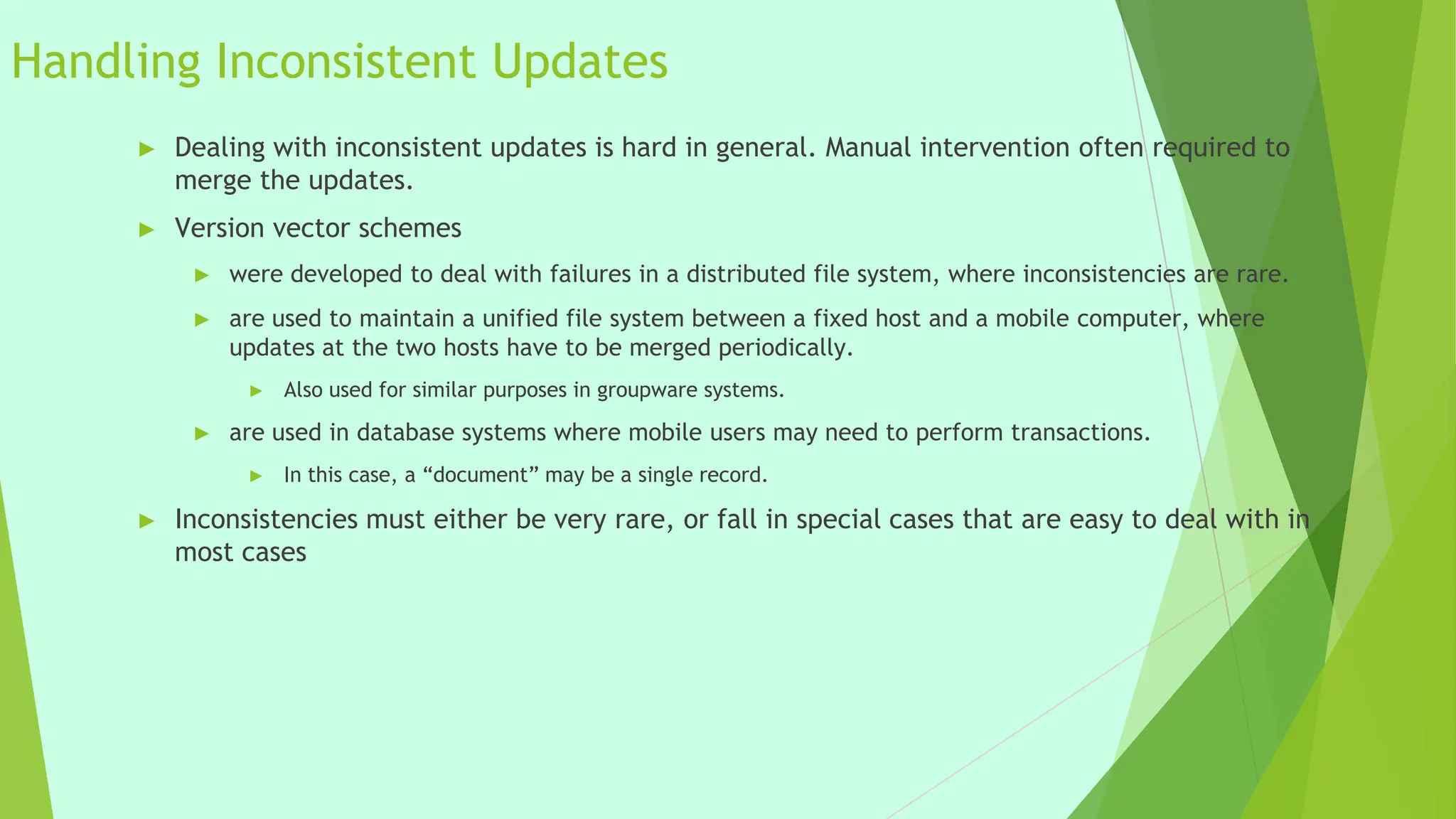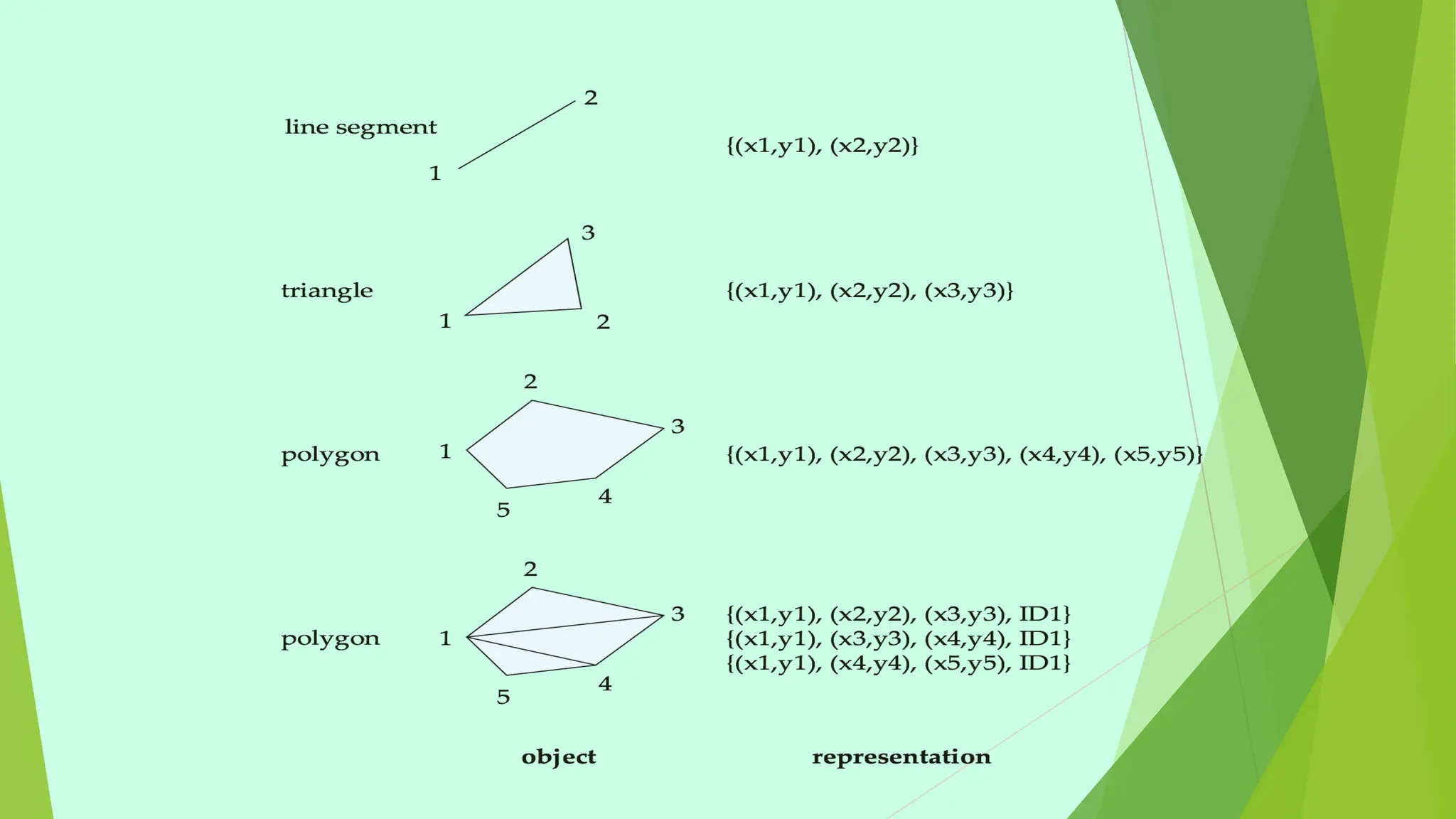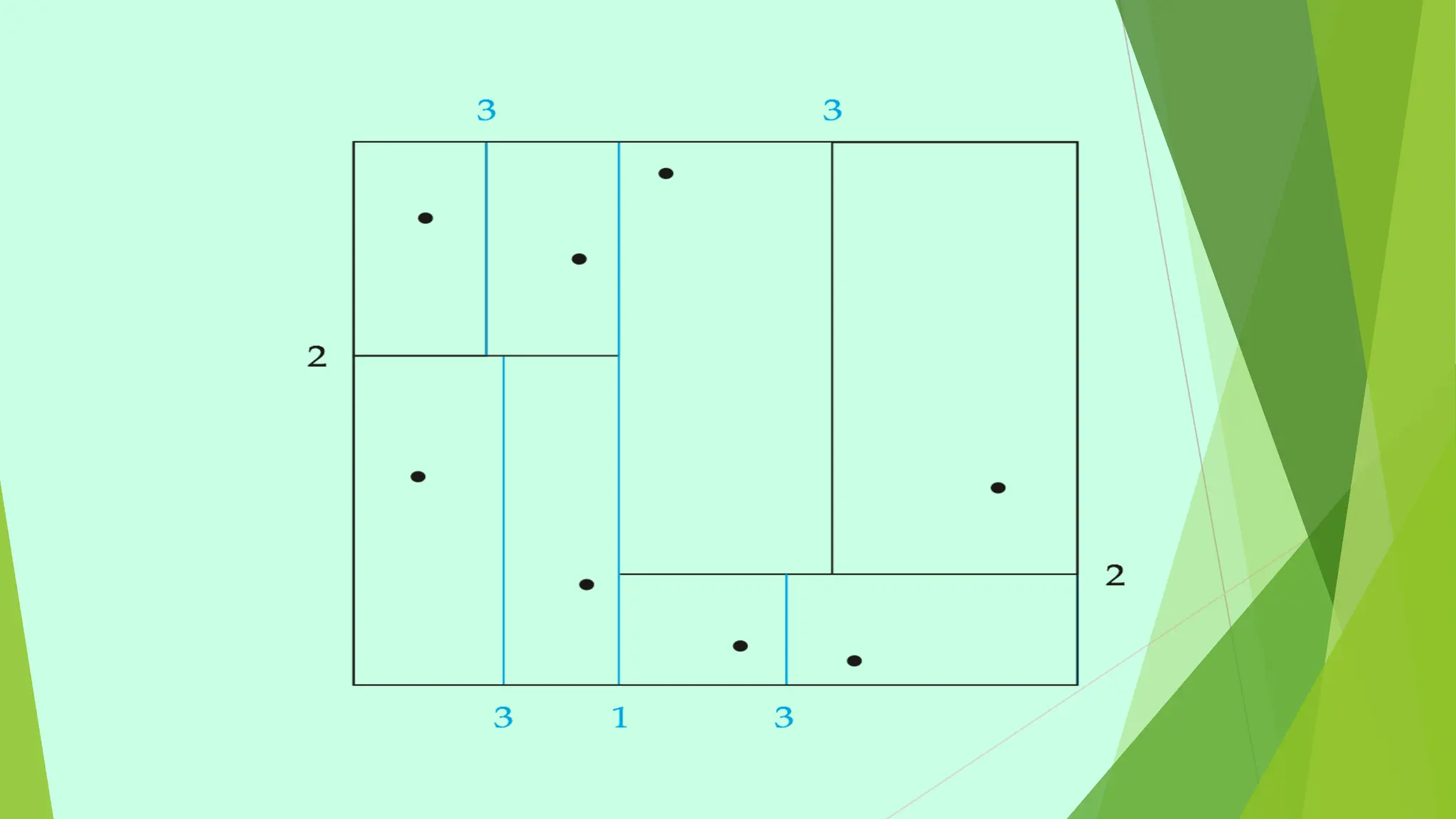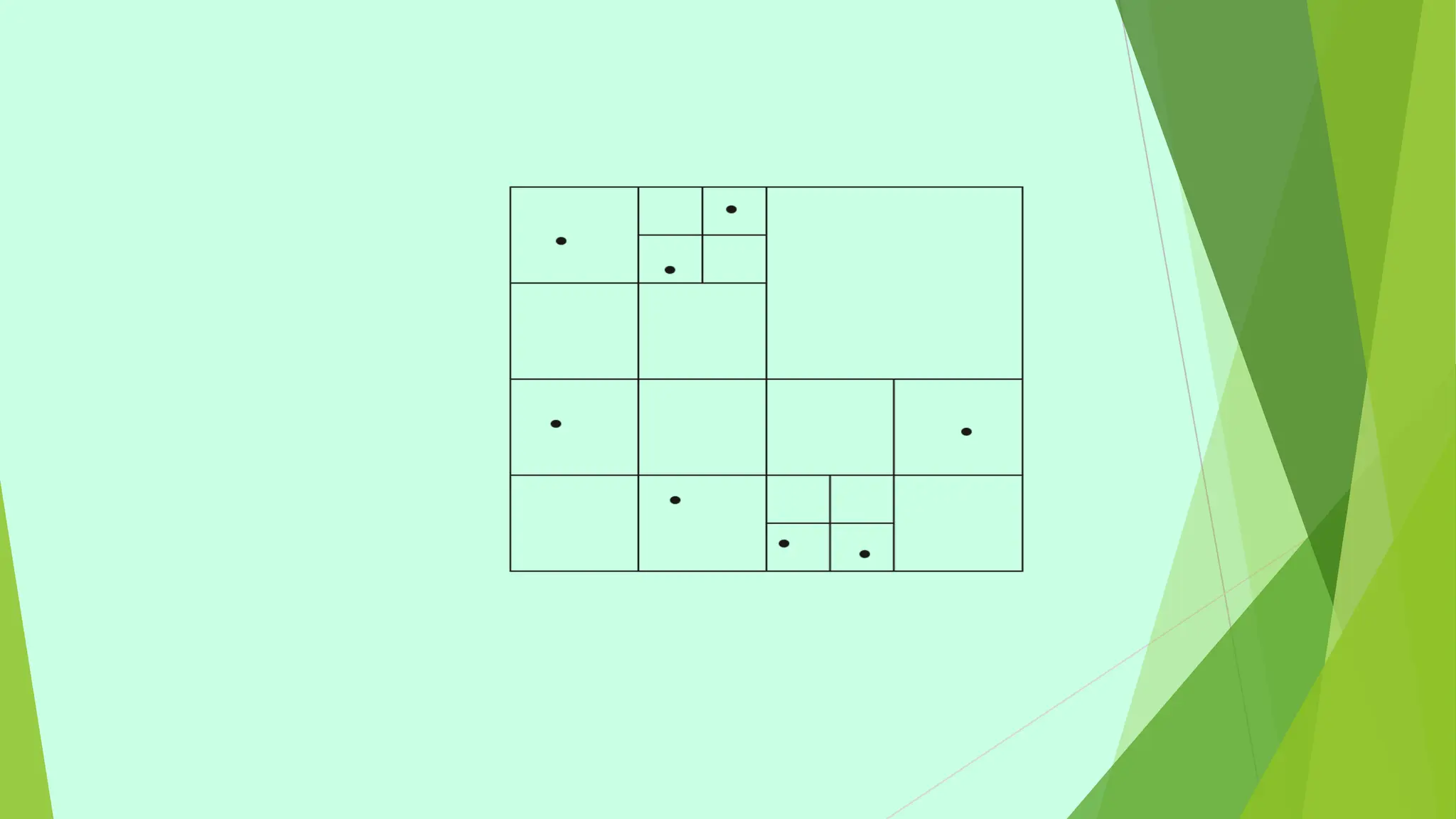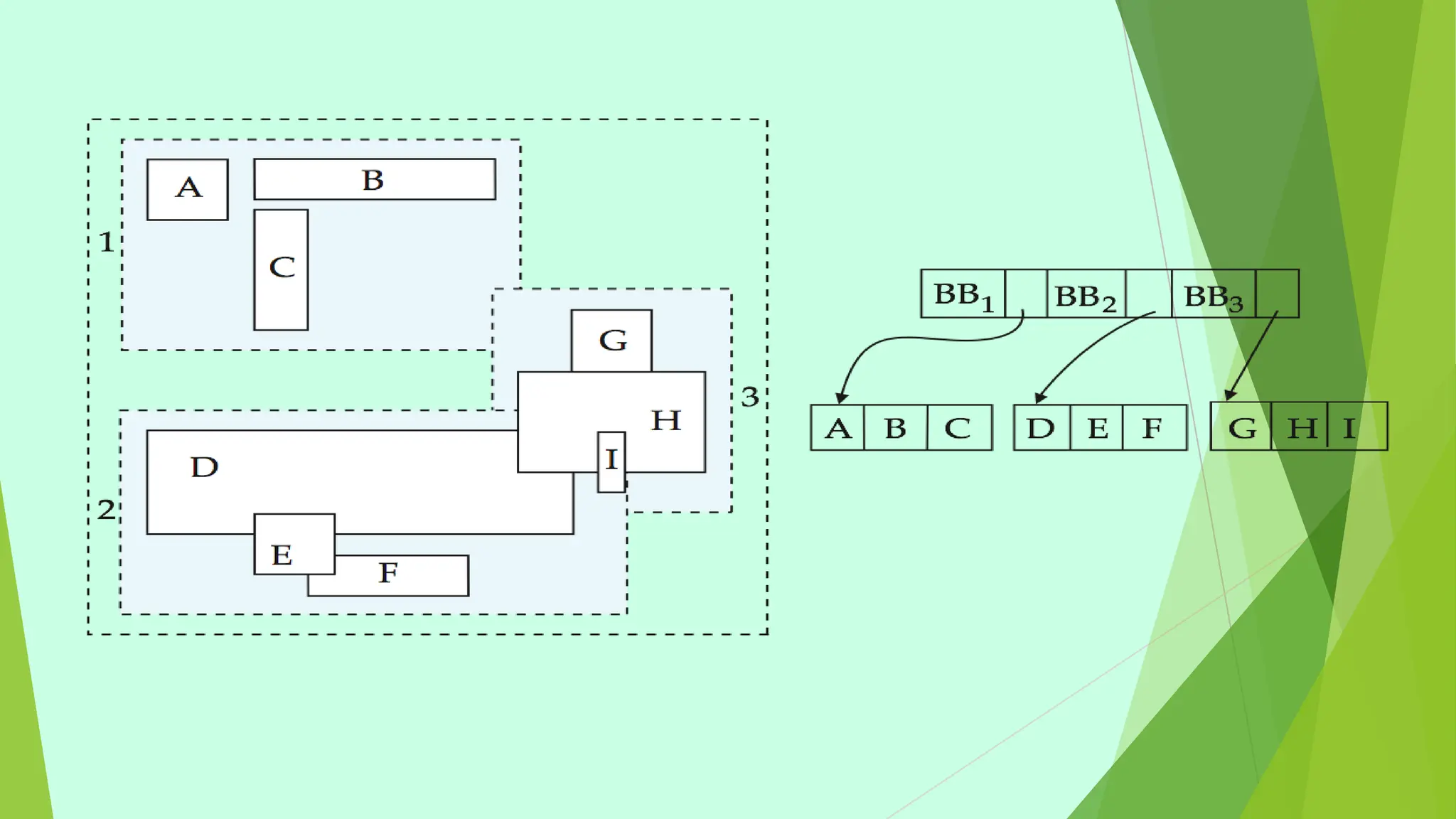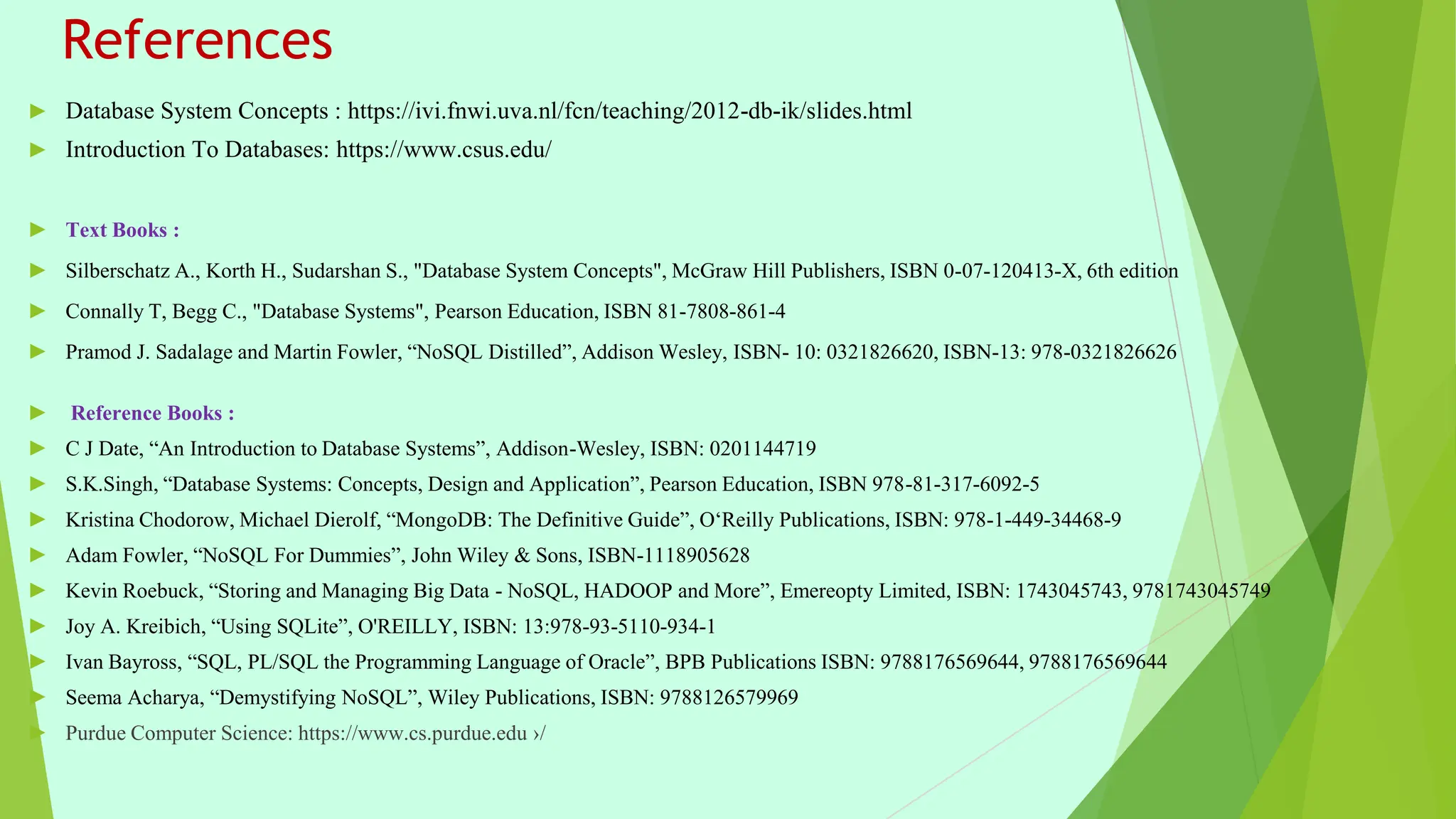This document provides information about emerging databases and complex data types covered in a database management systems course. It discusses topics like active databases, main memory databases, semantic databases, semi-structured data, nested data types like JSON and XML, object-relational databases, and spatial data types. It also provides references for additional reading.
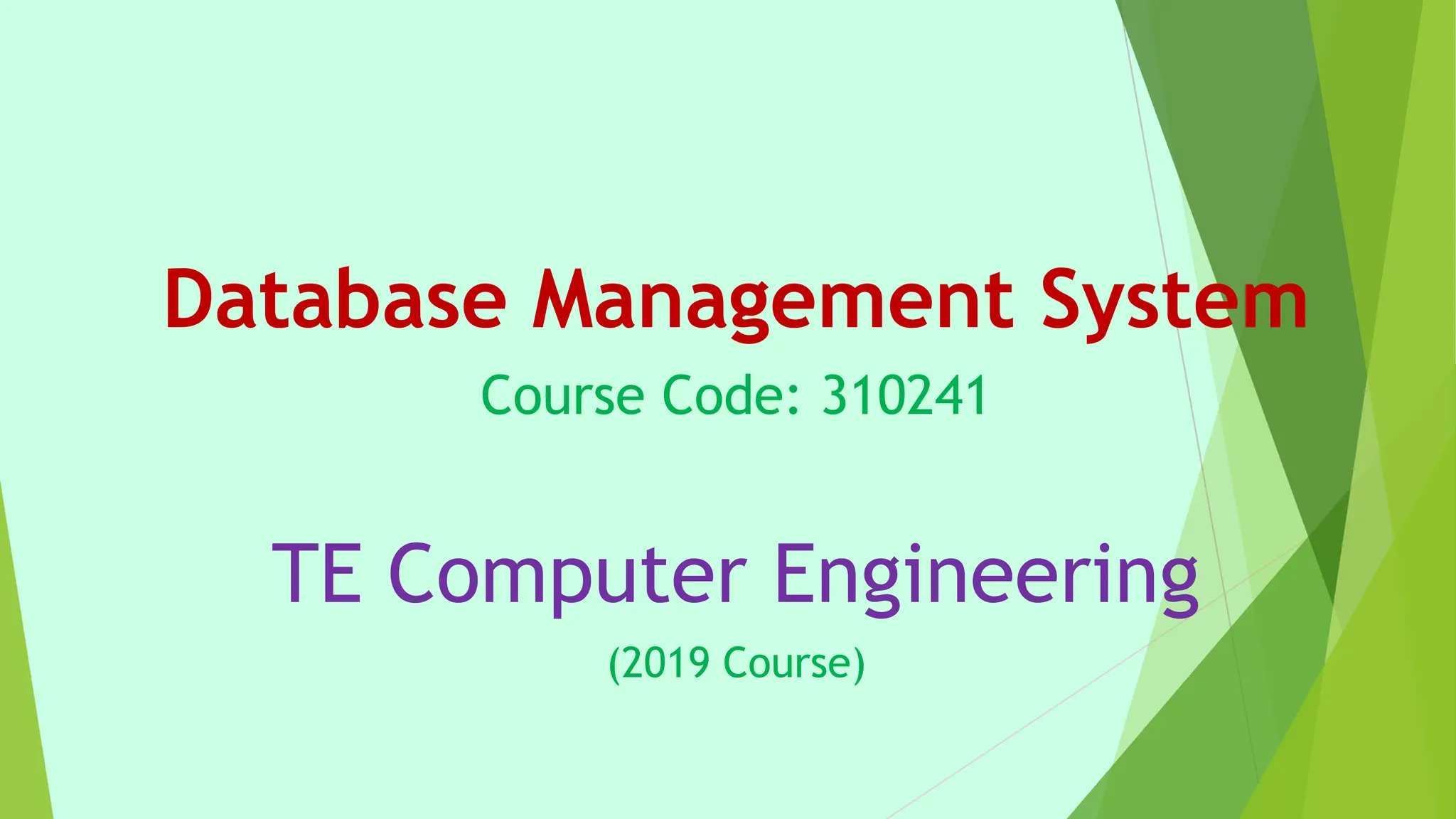

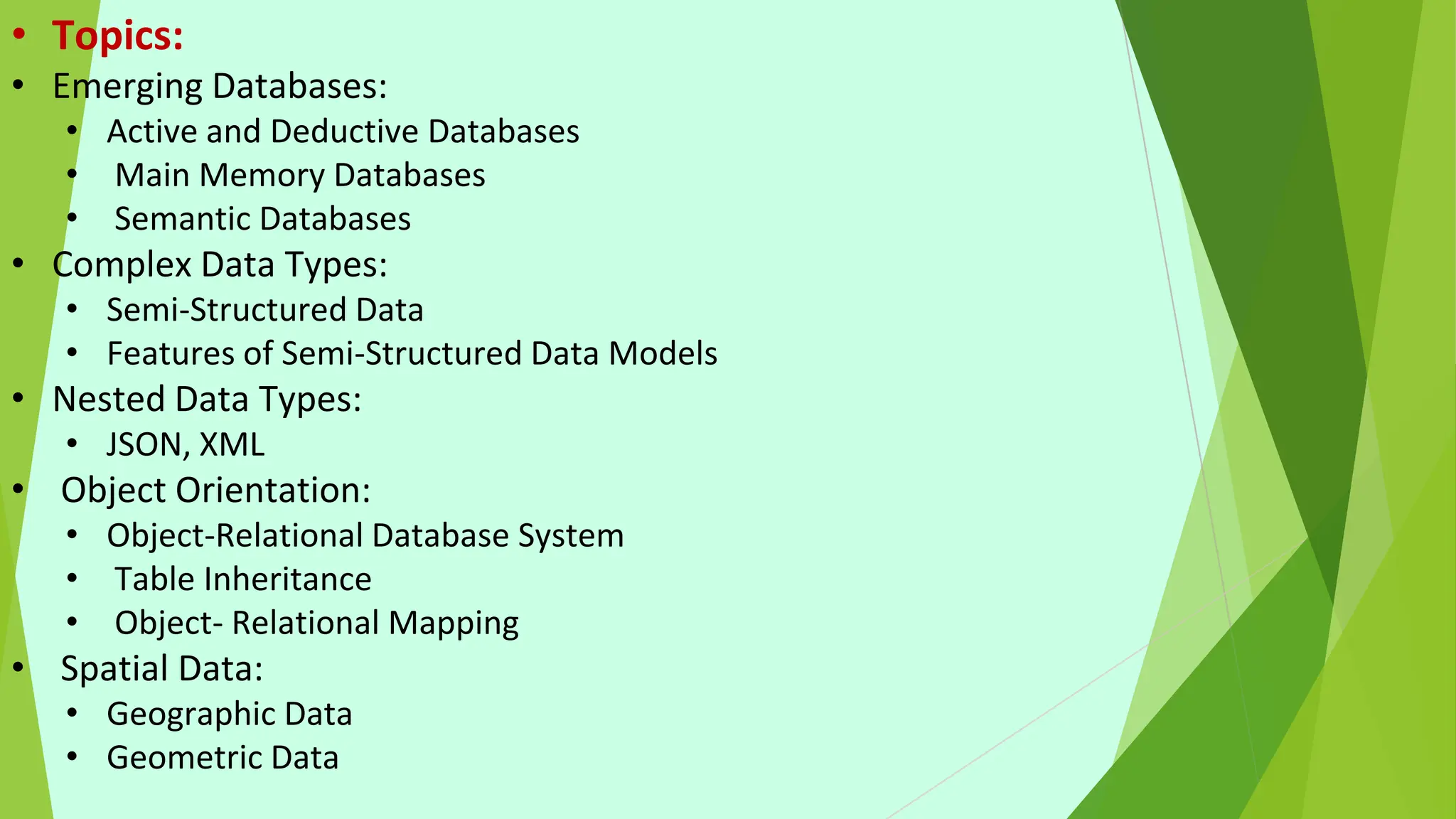


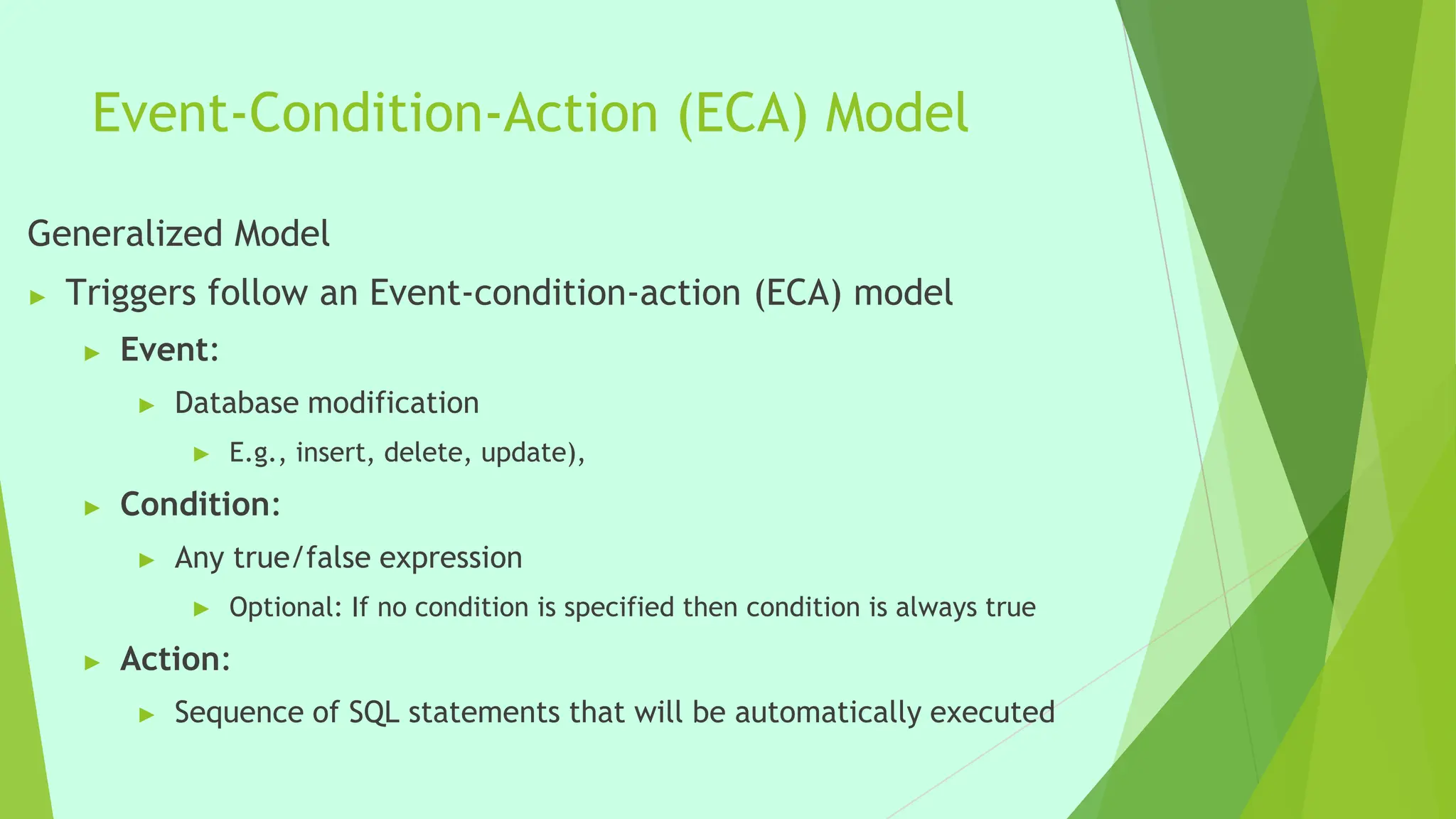
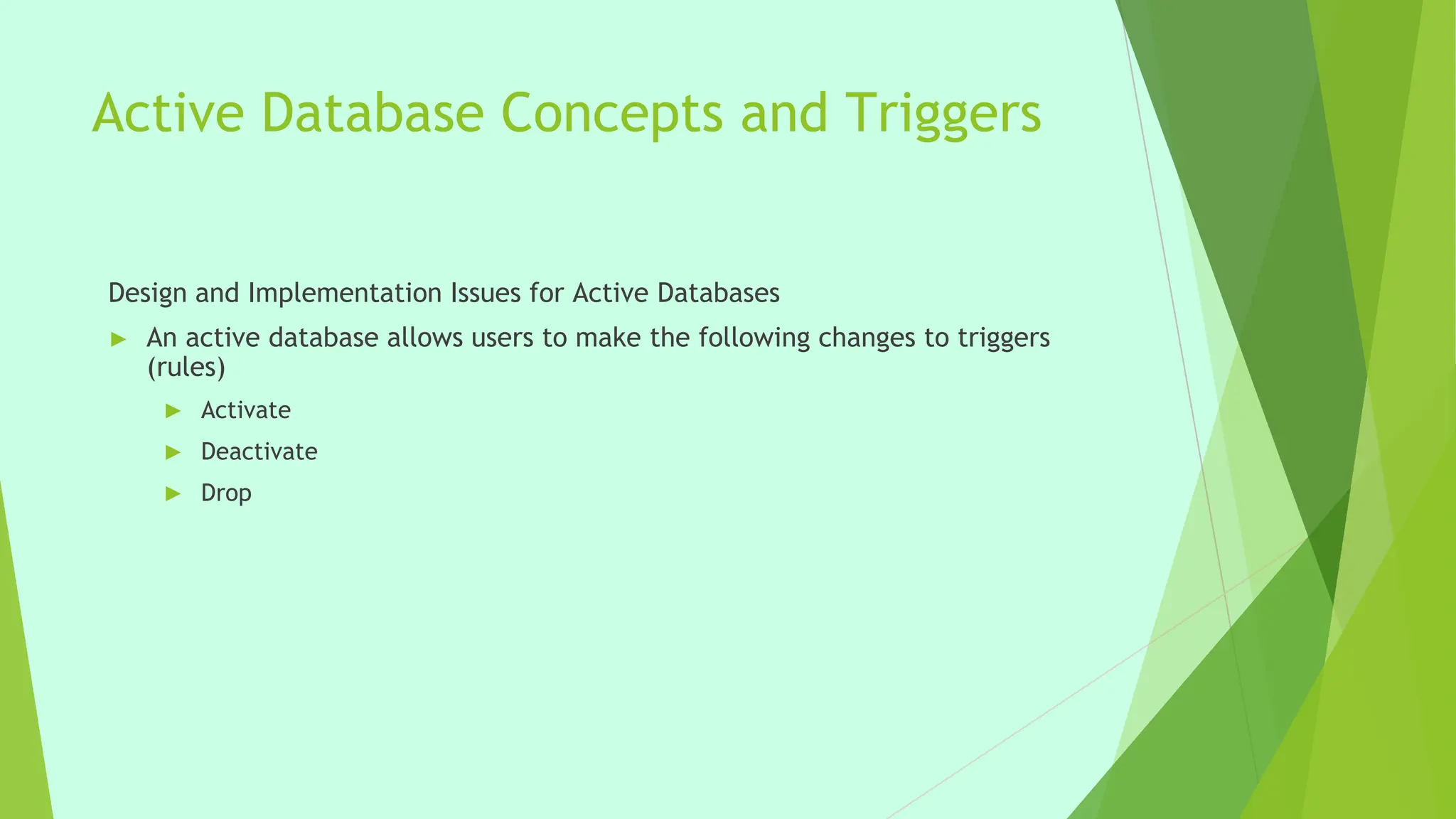
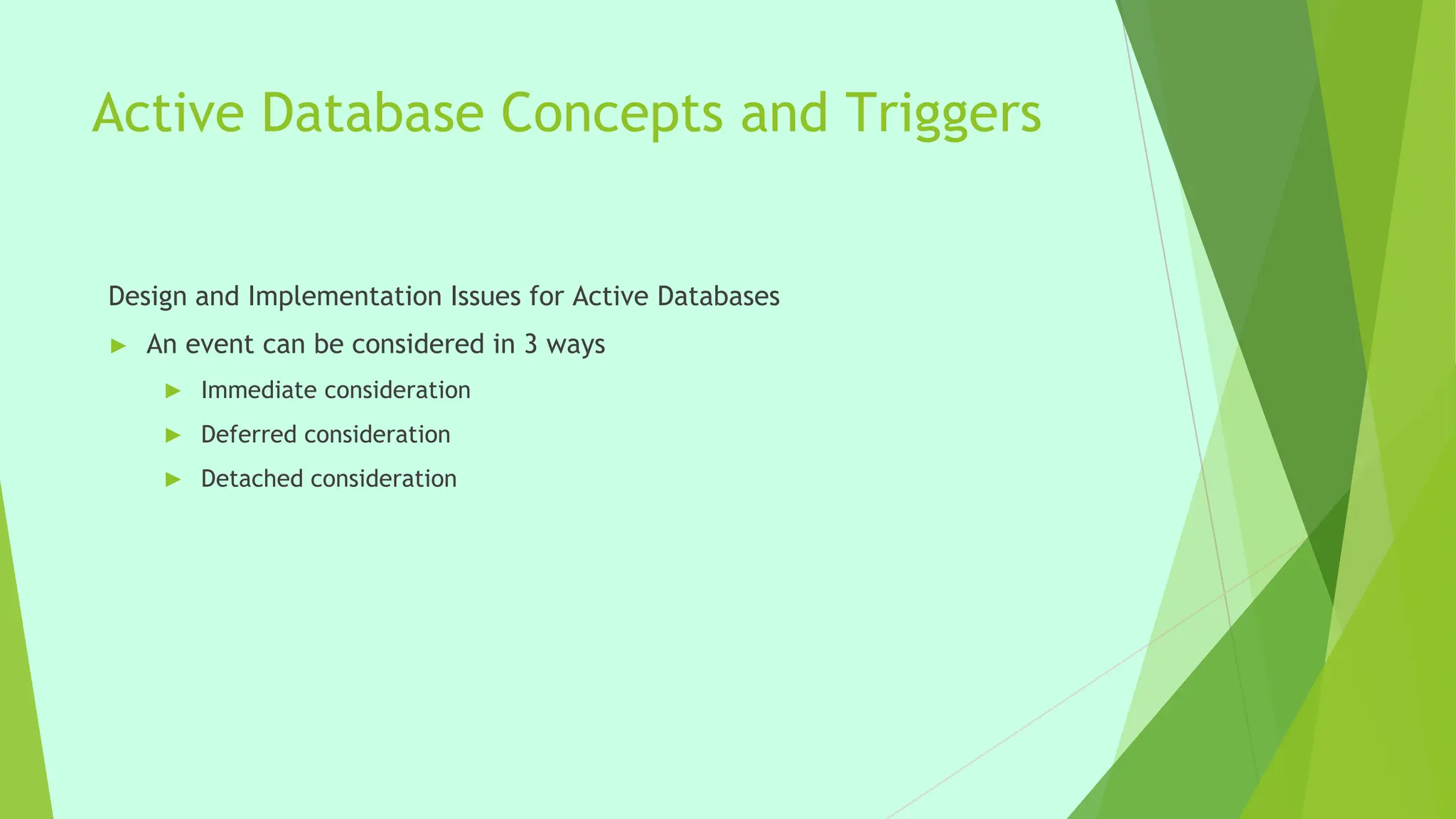
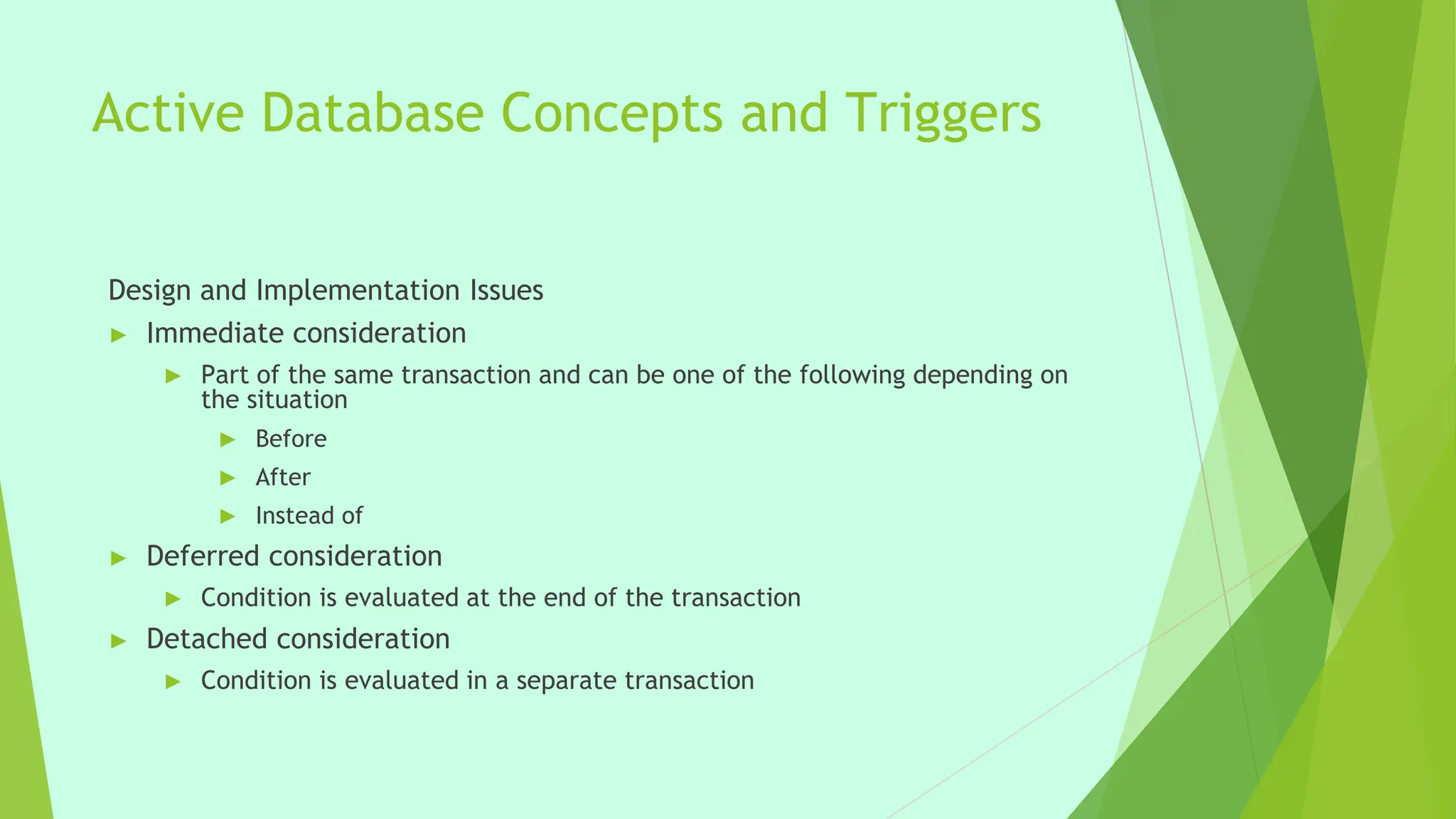
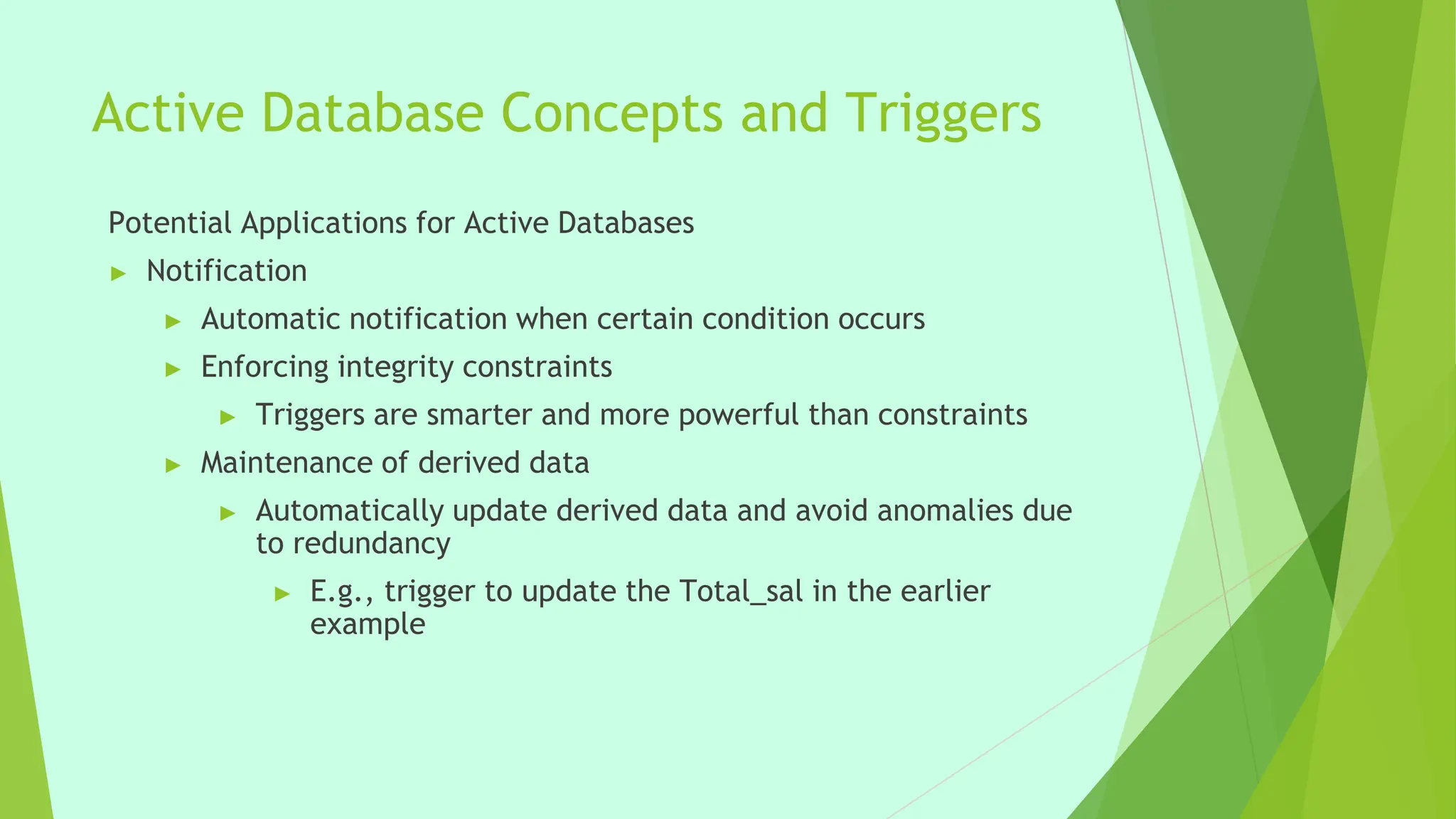
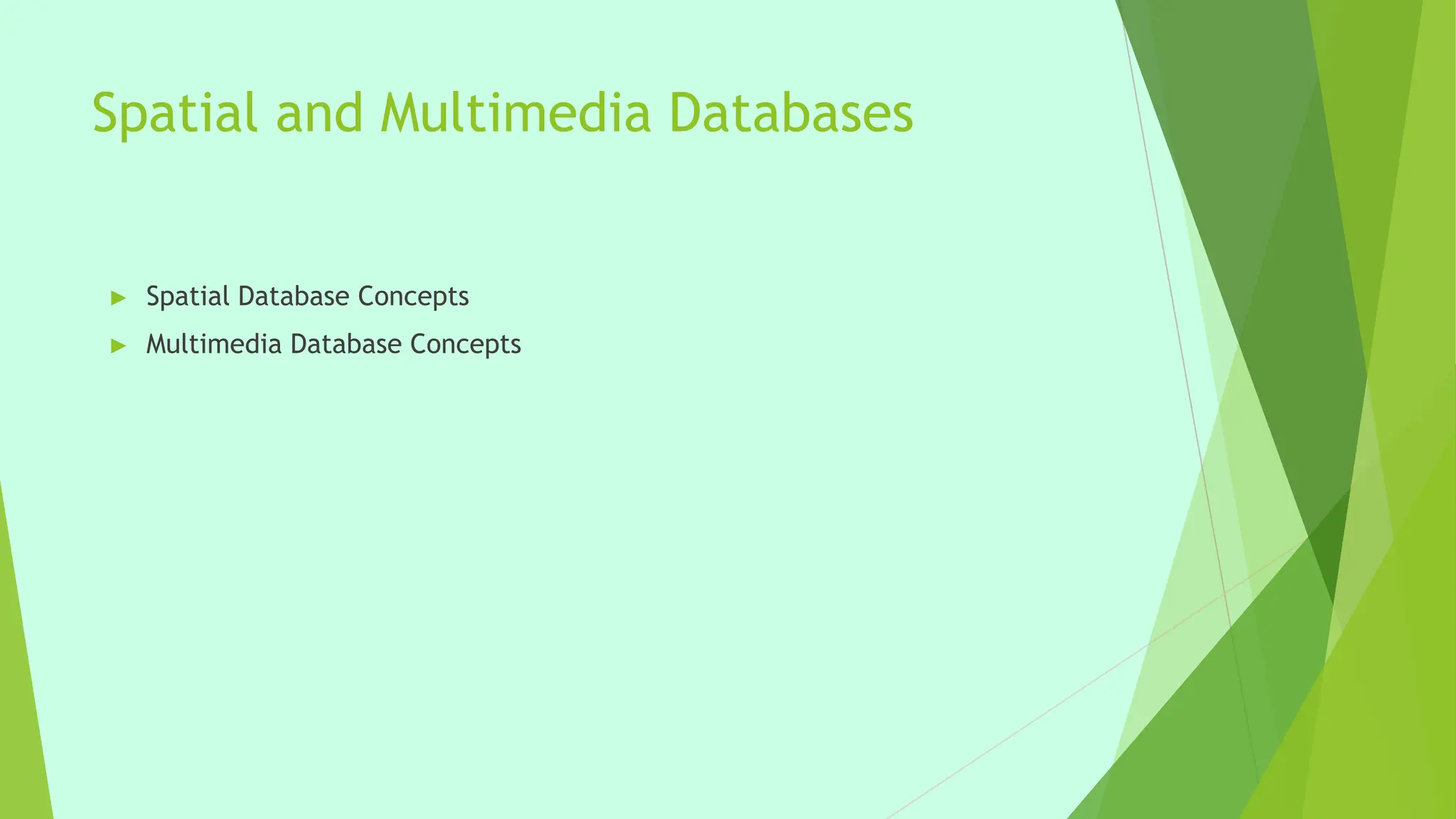
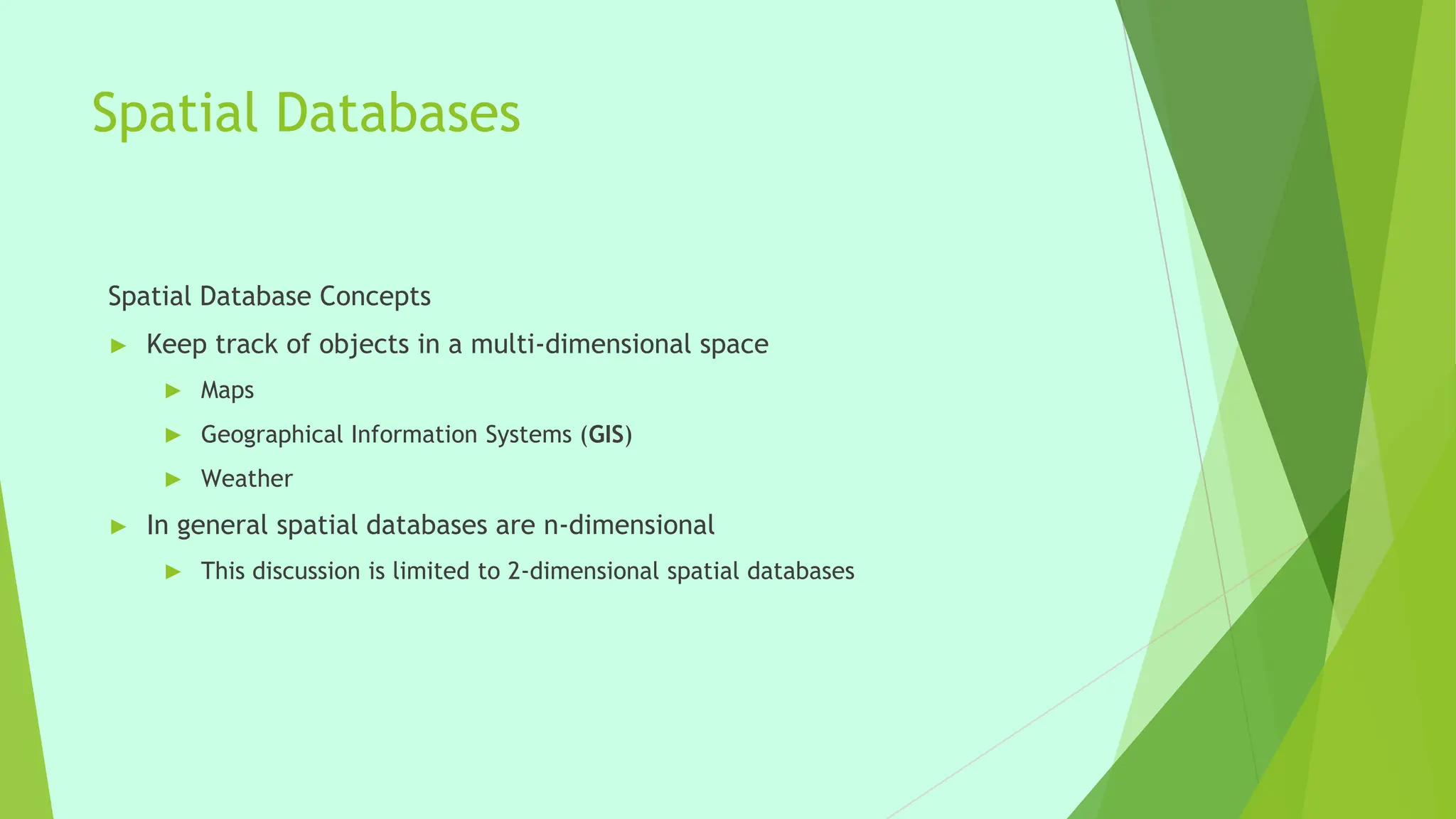
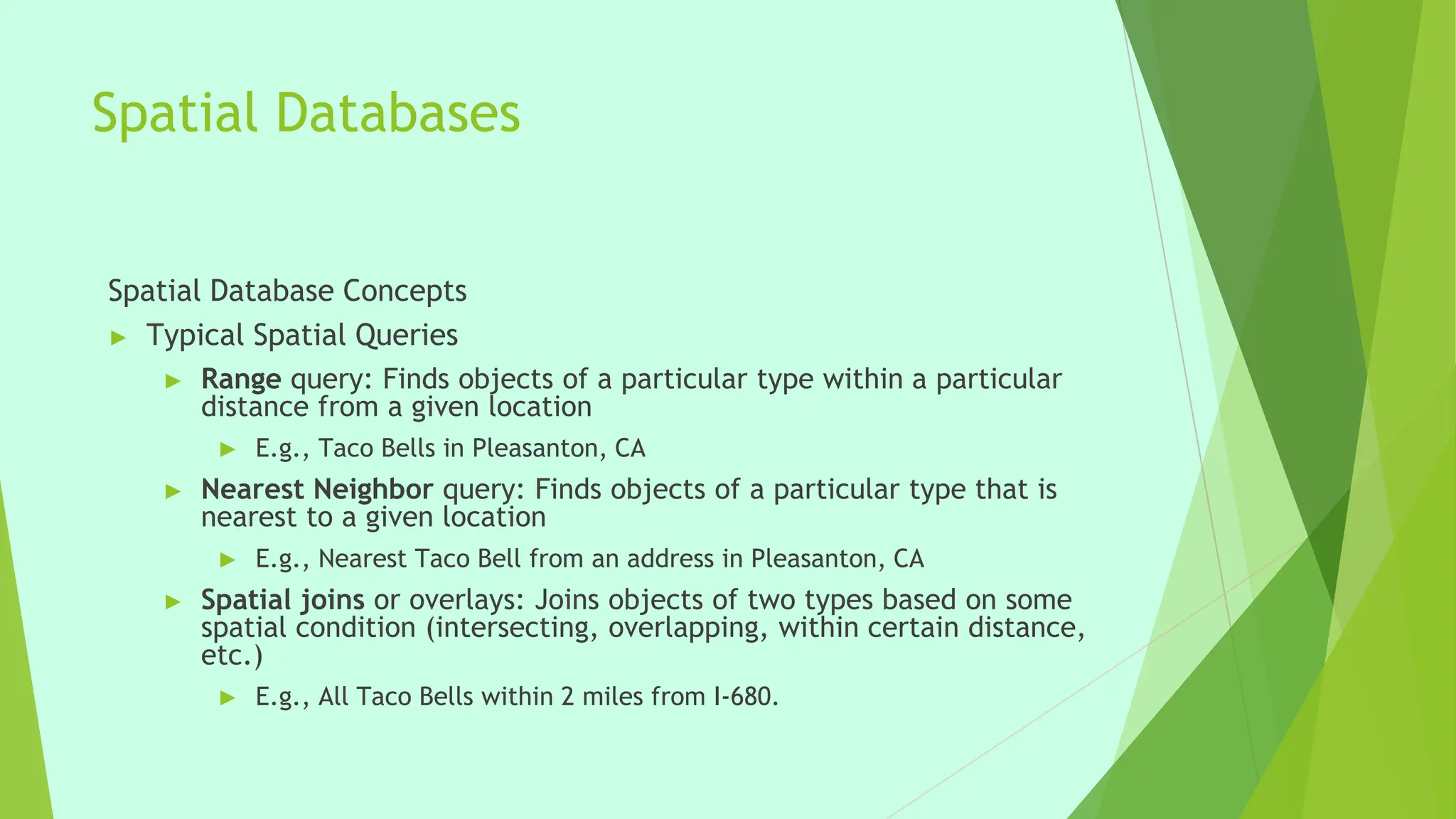
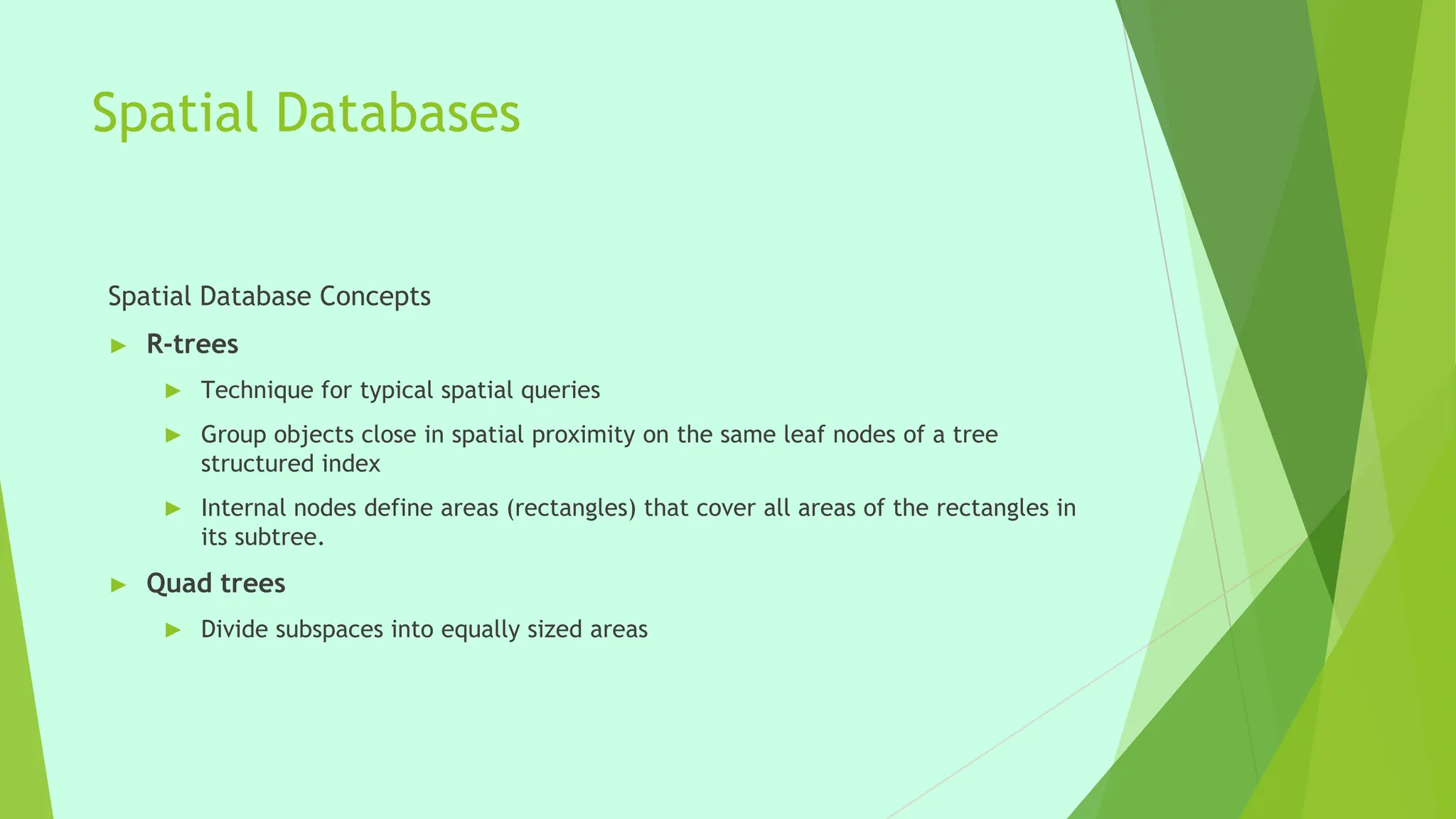
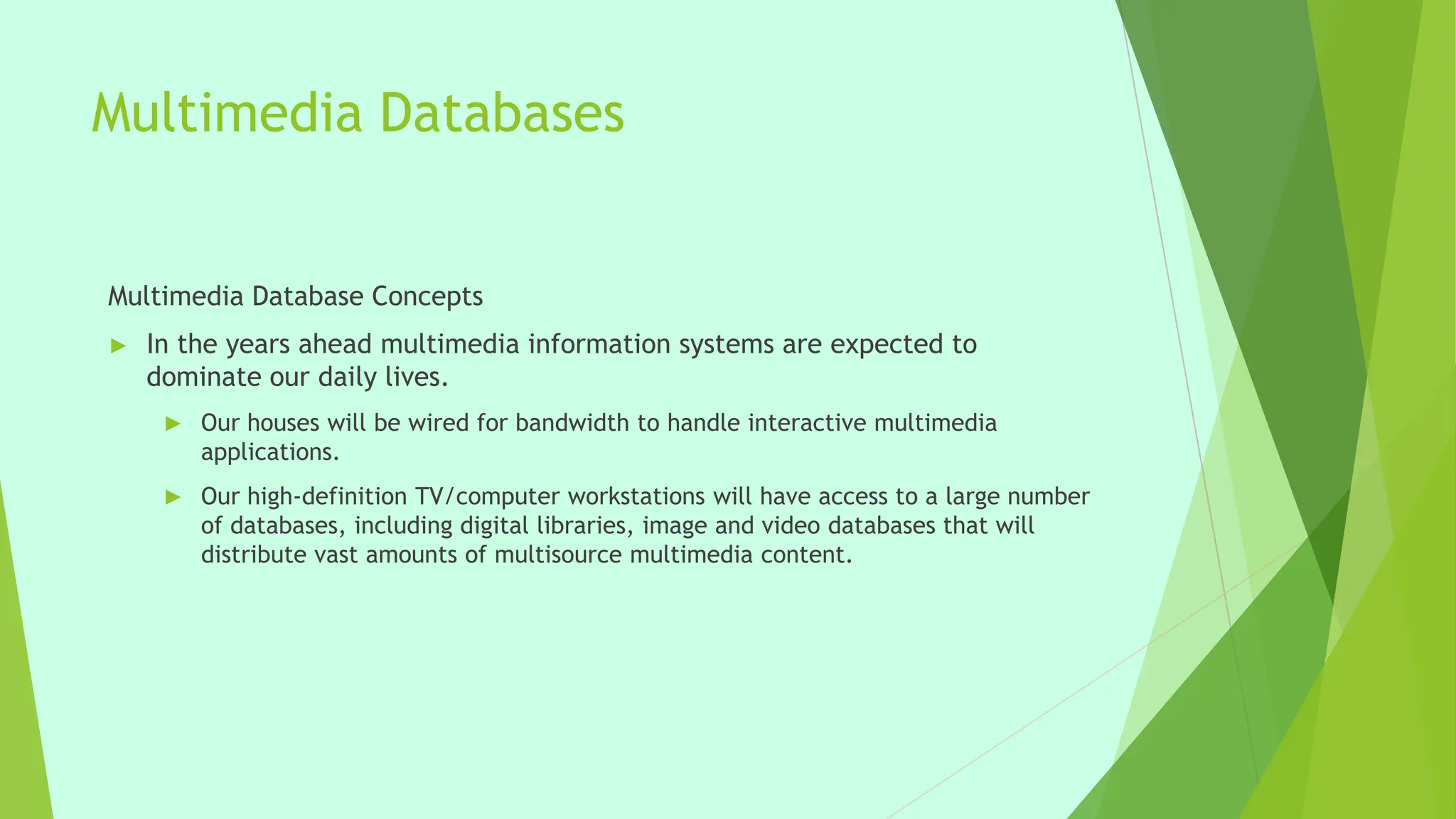
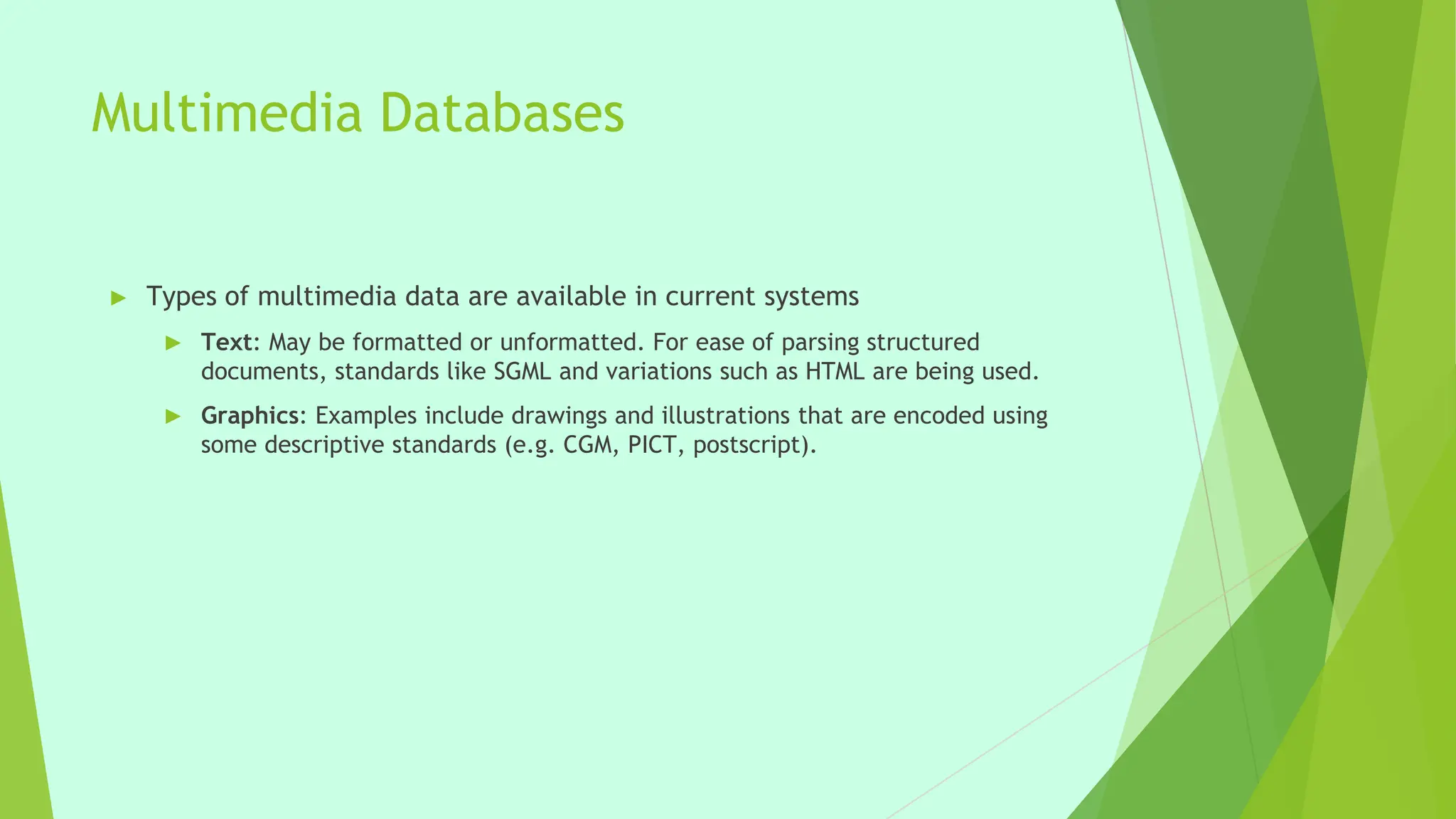
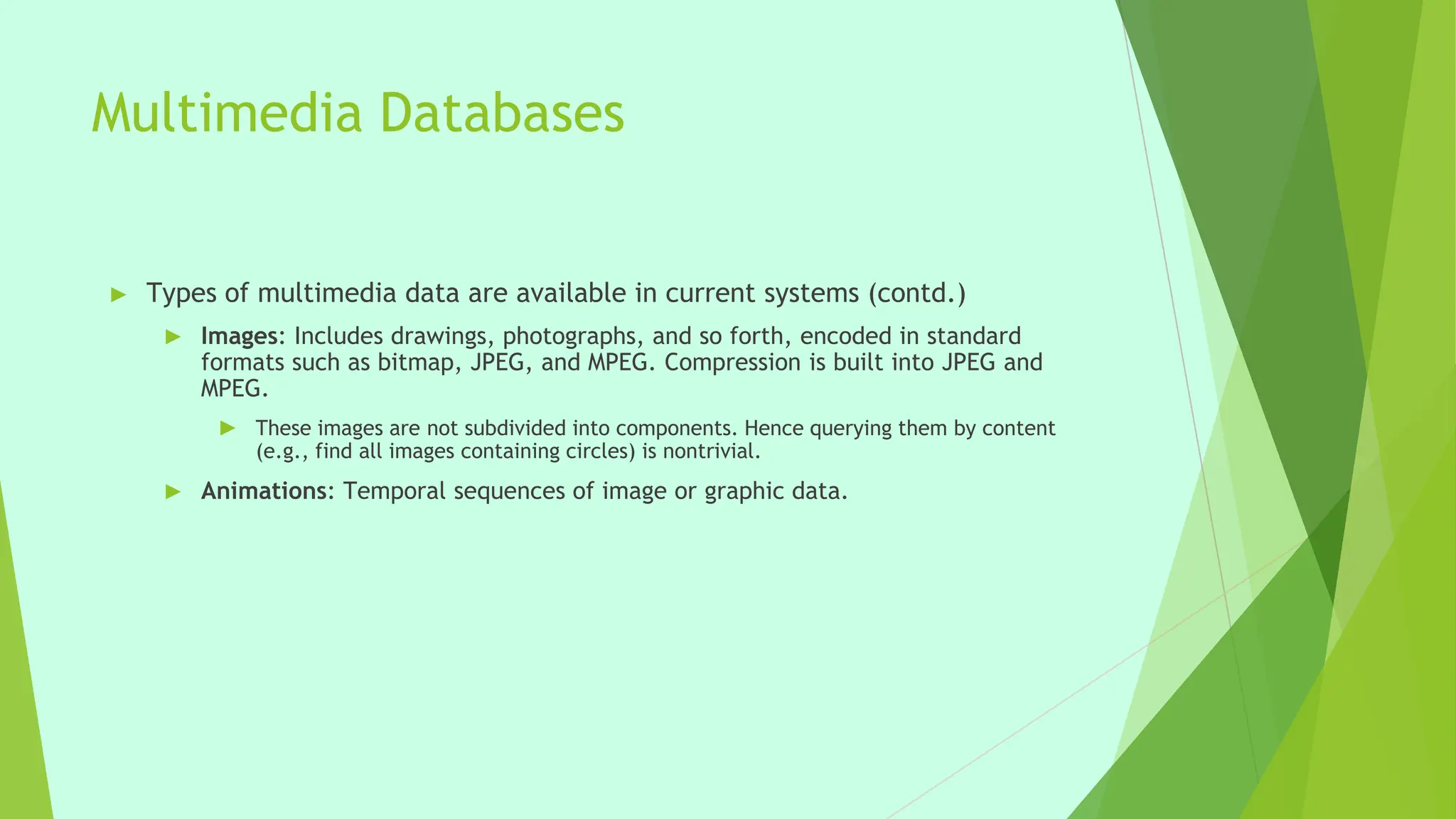
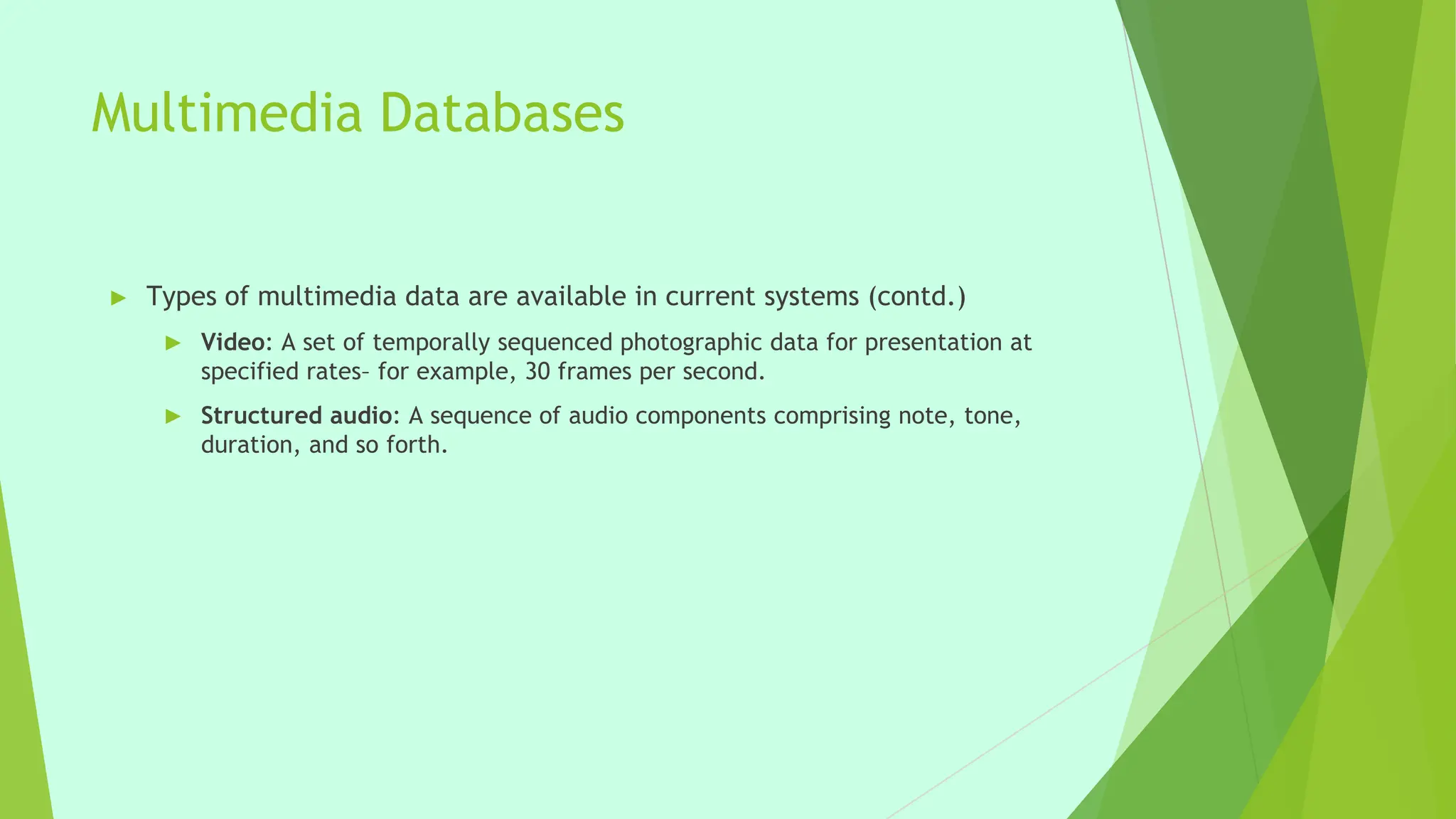
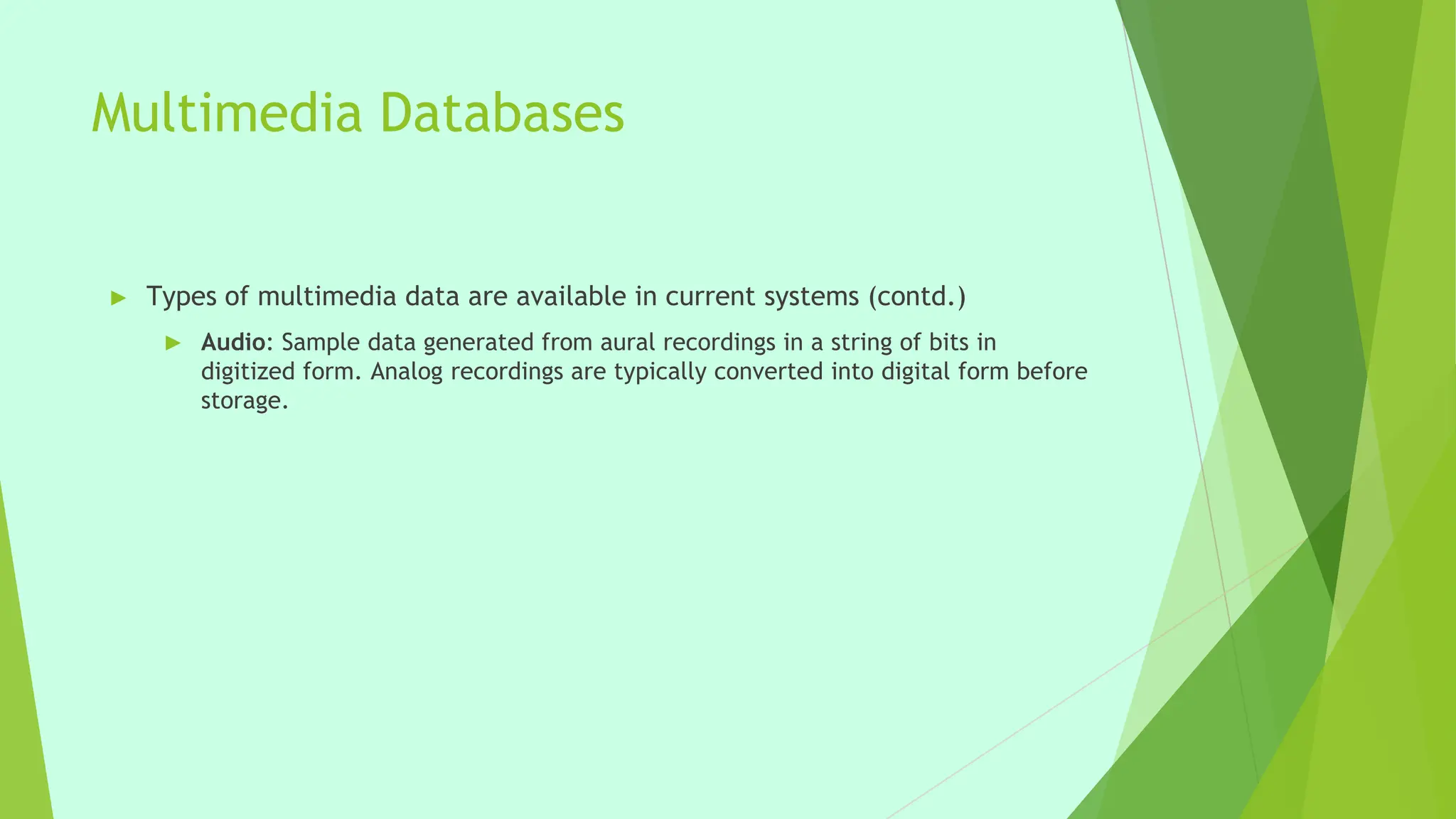
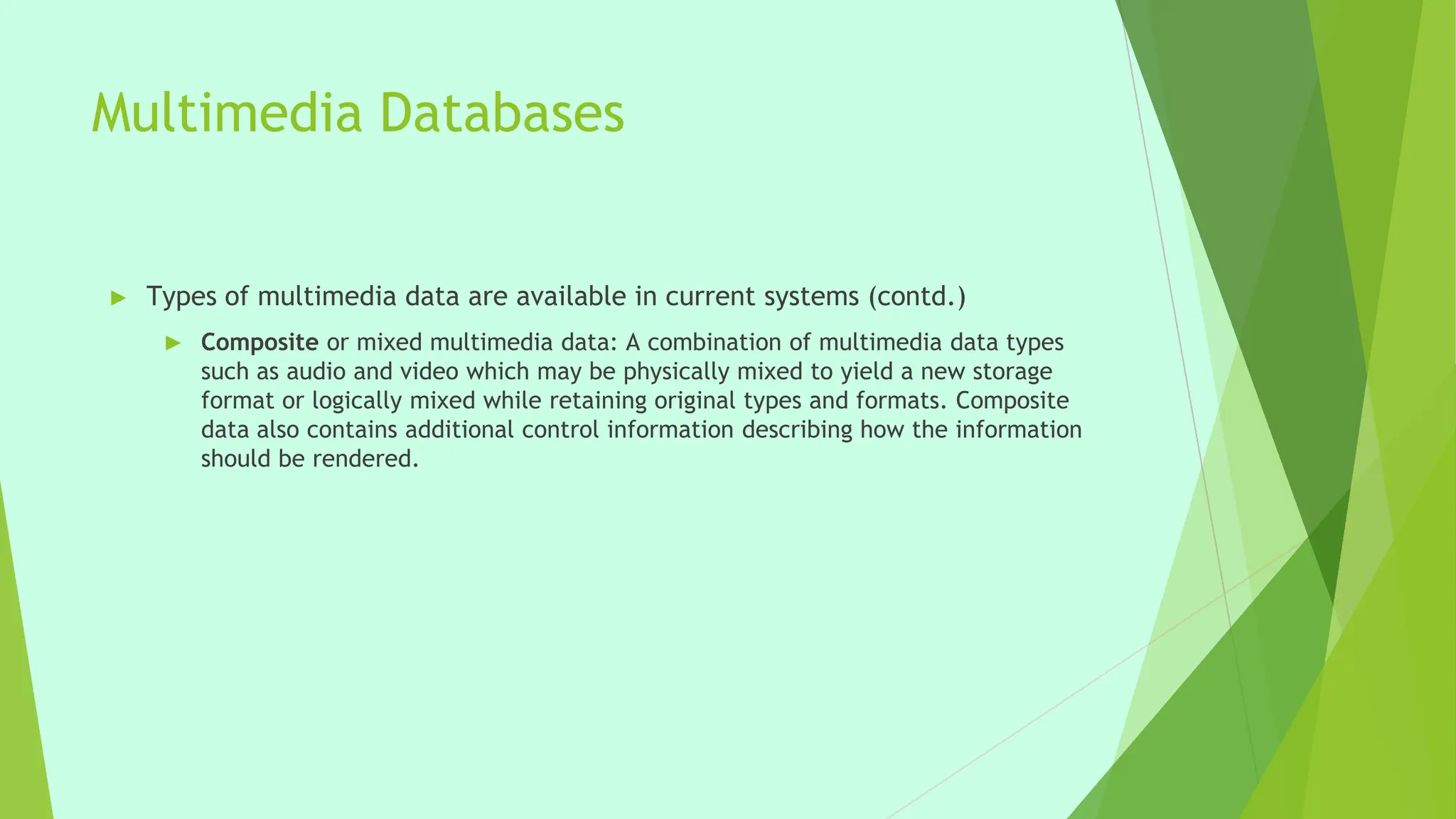
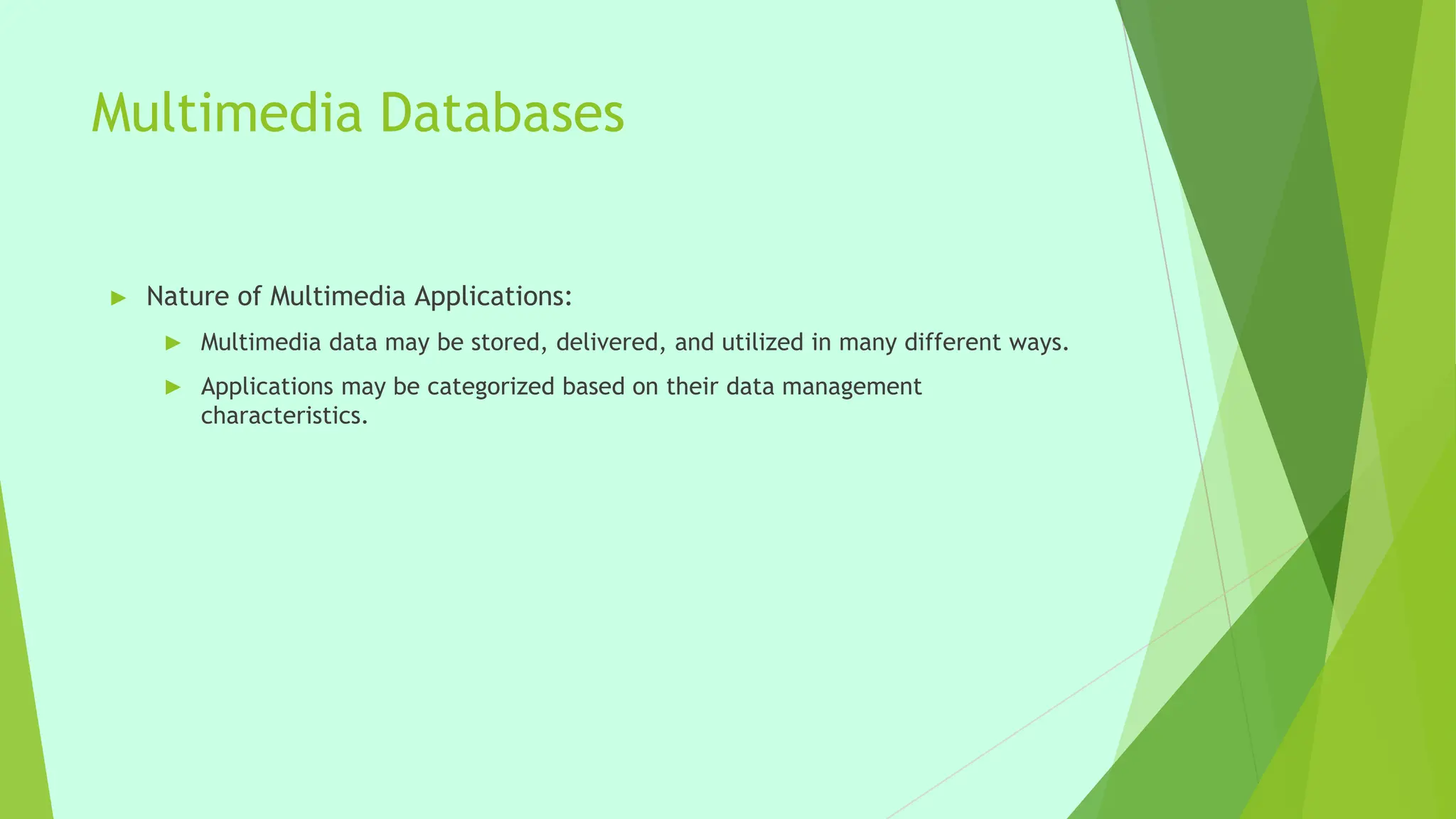
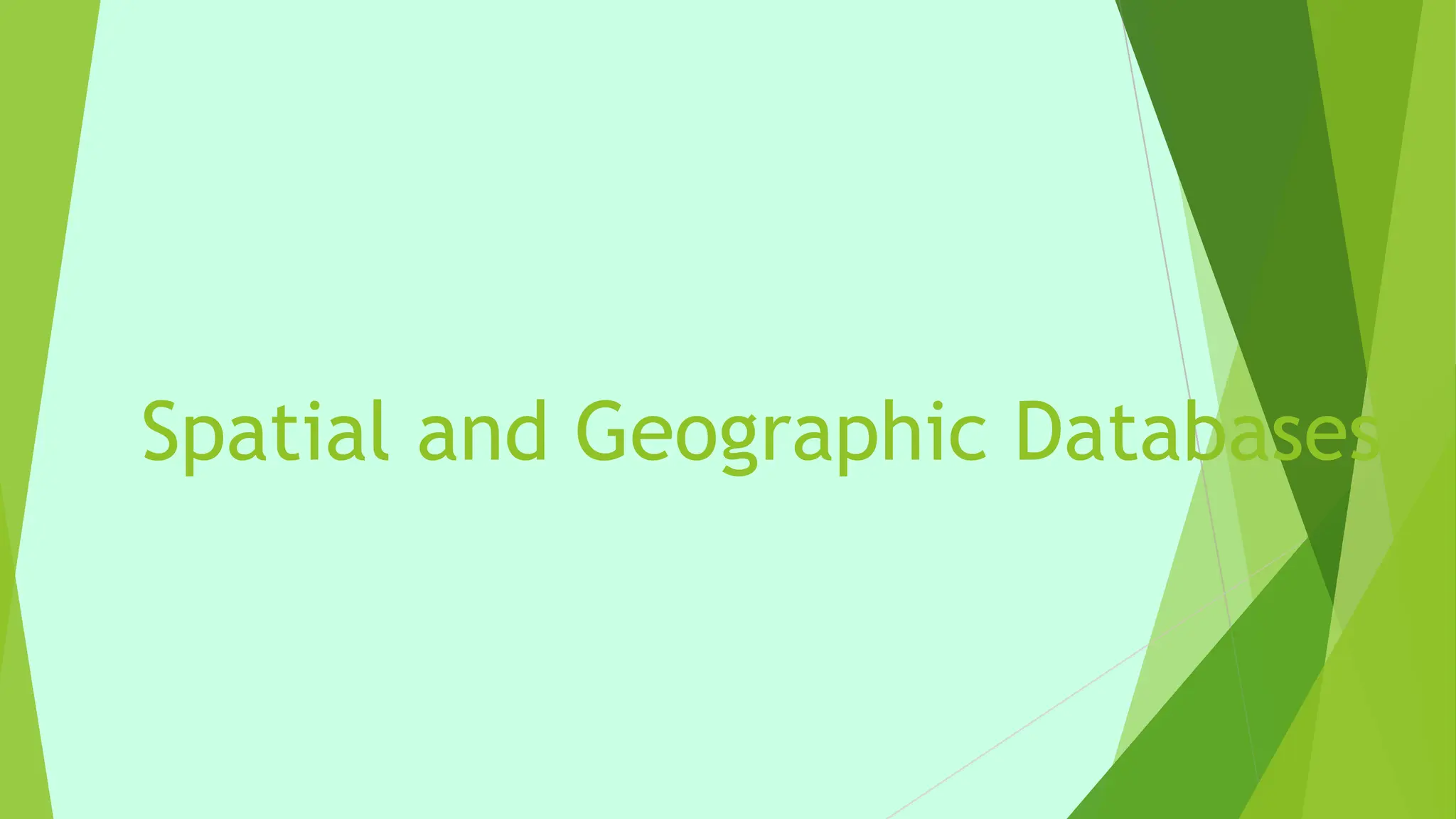
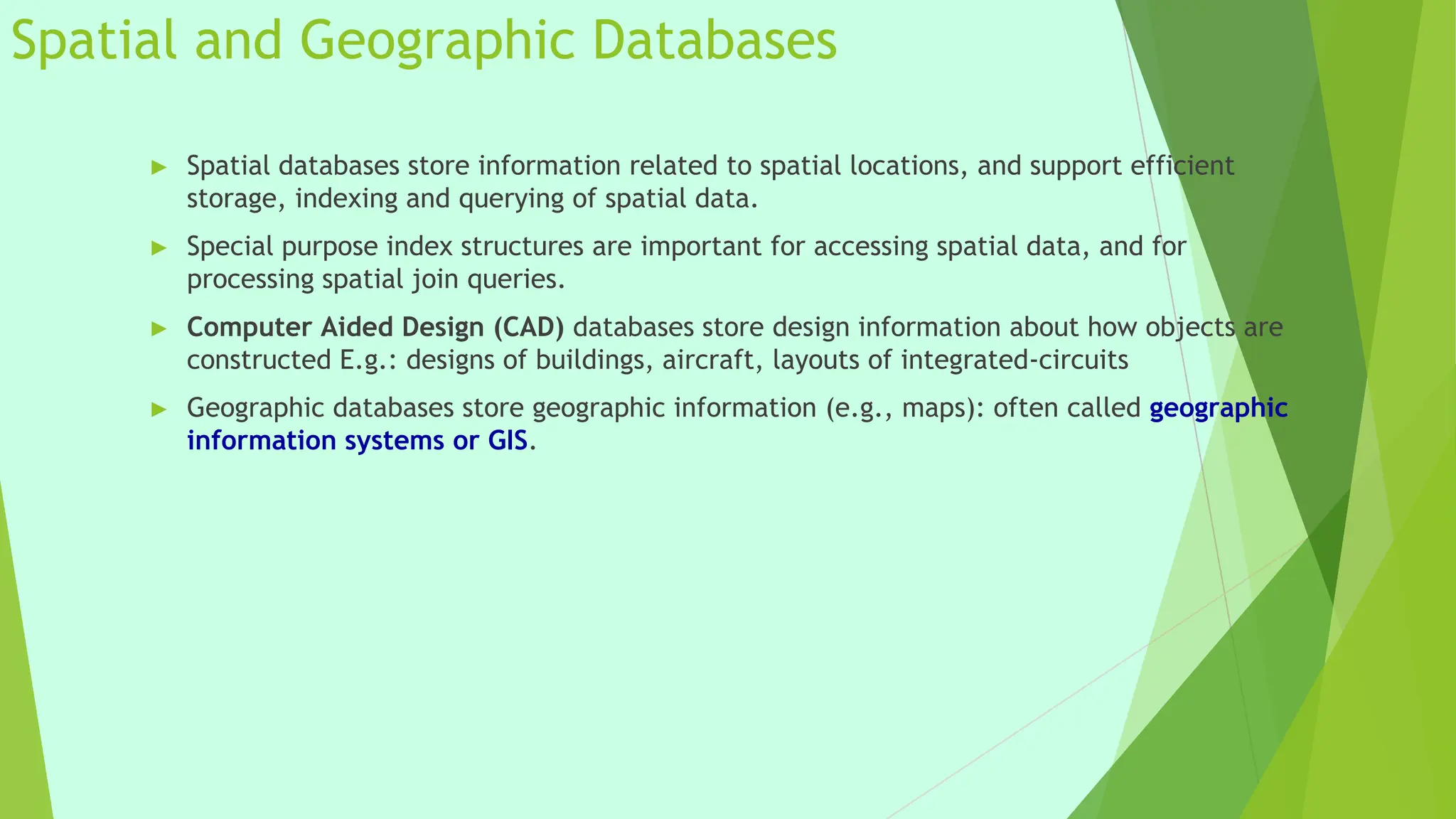

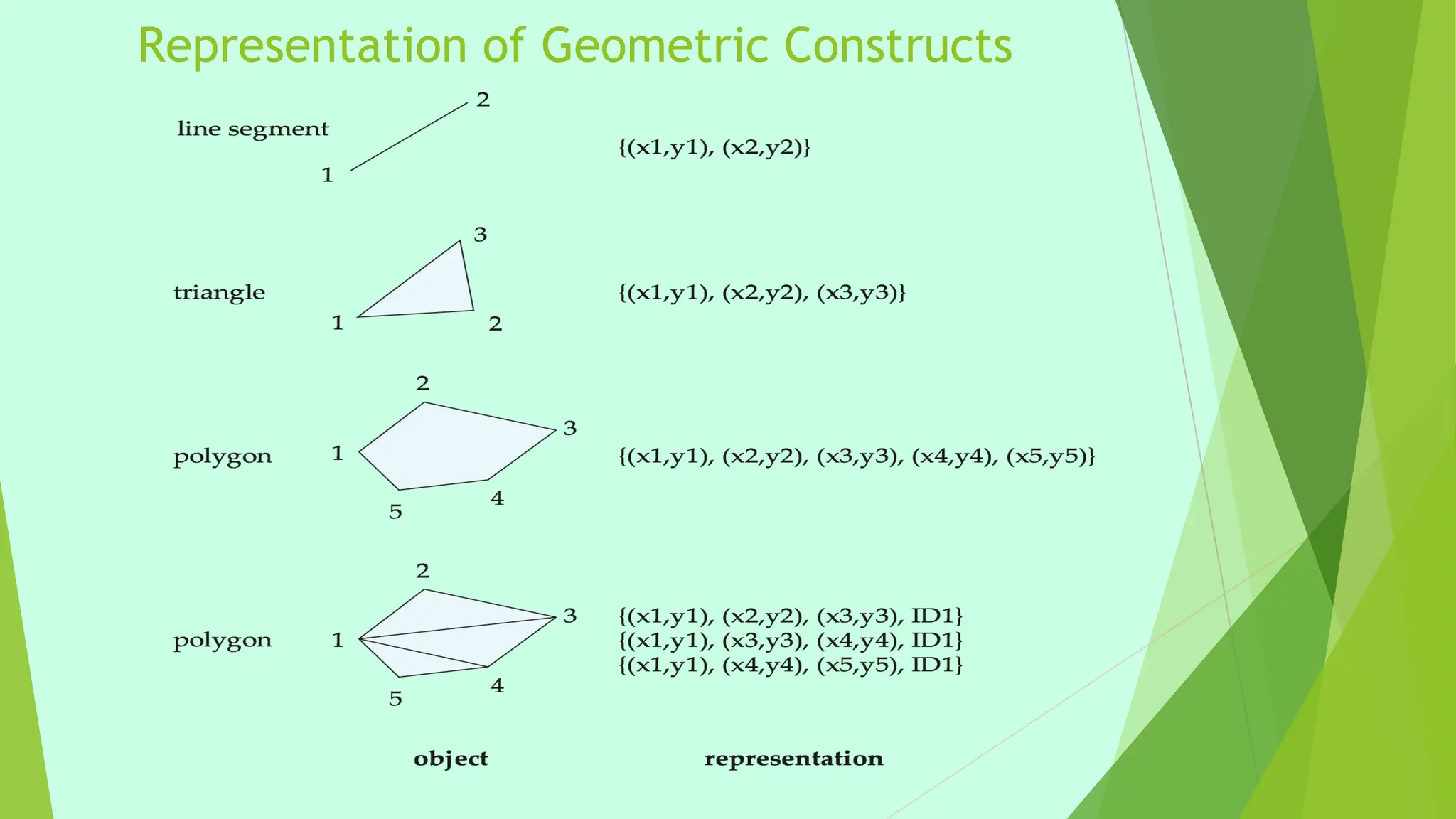
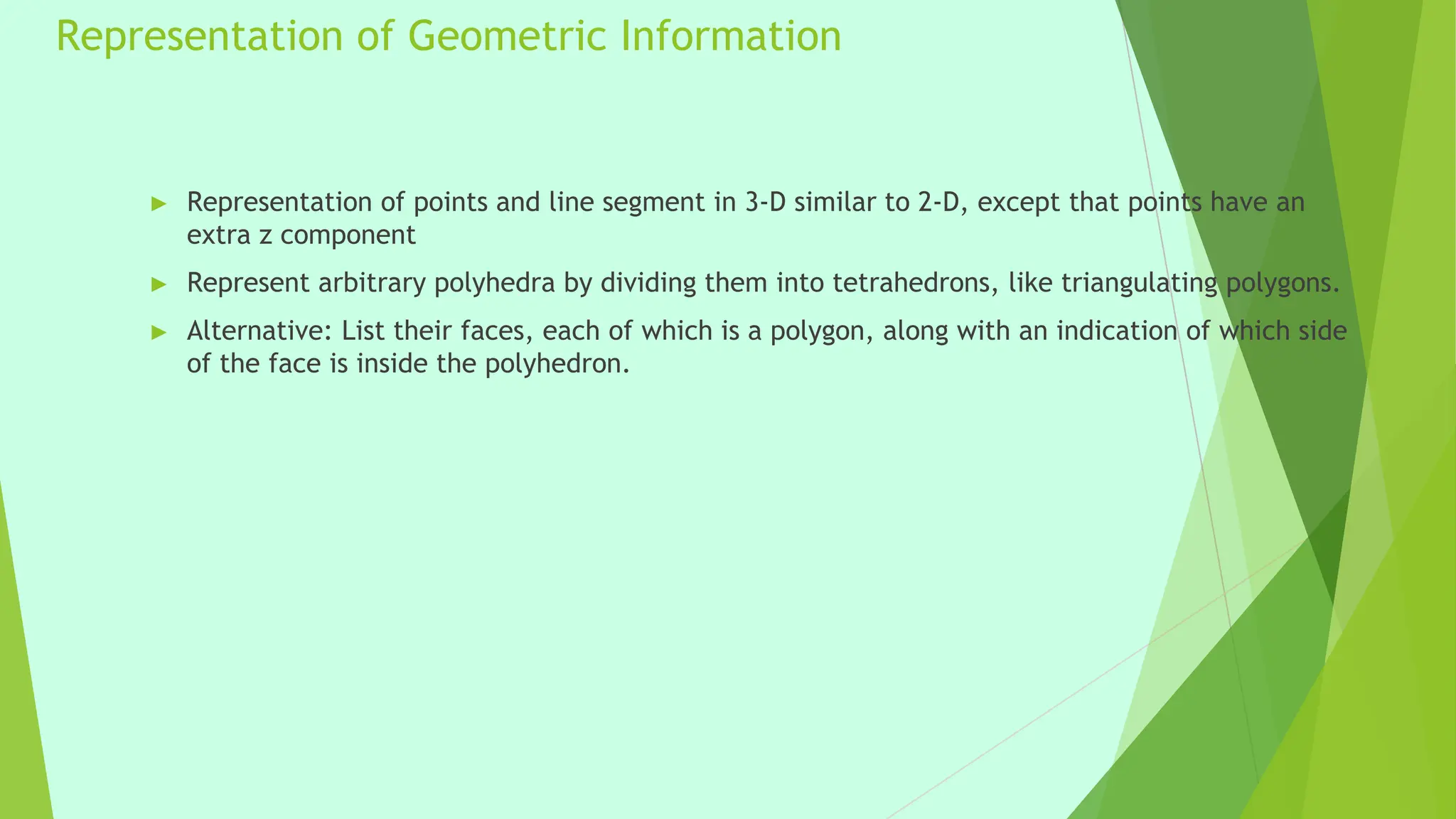
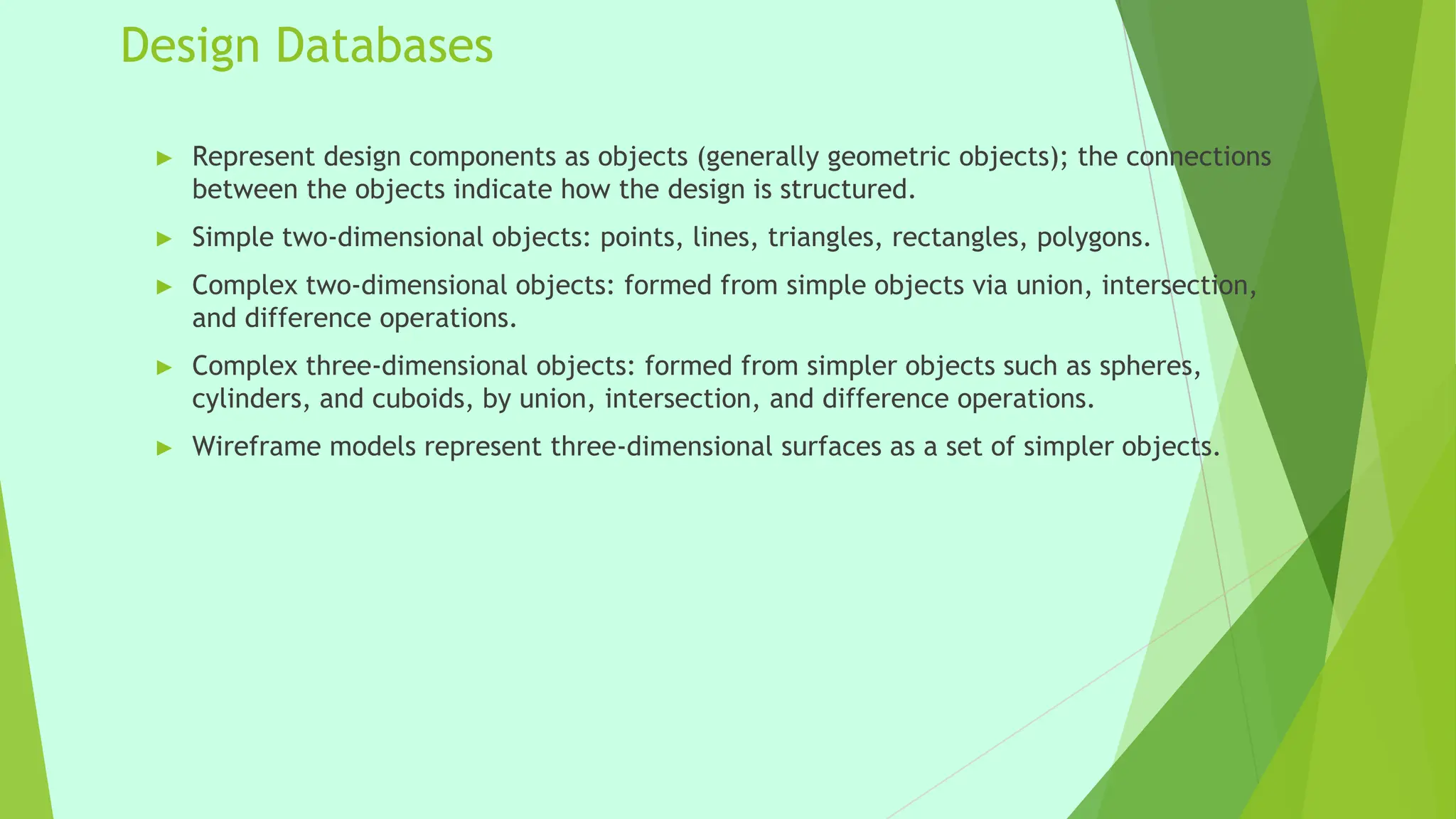
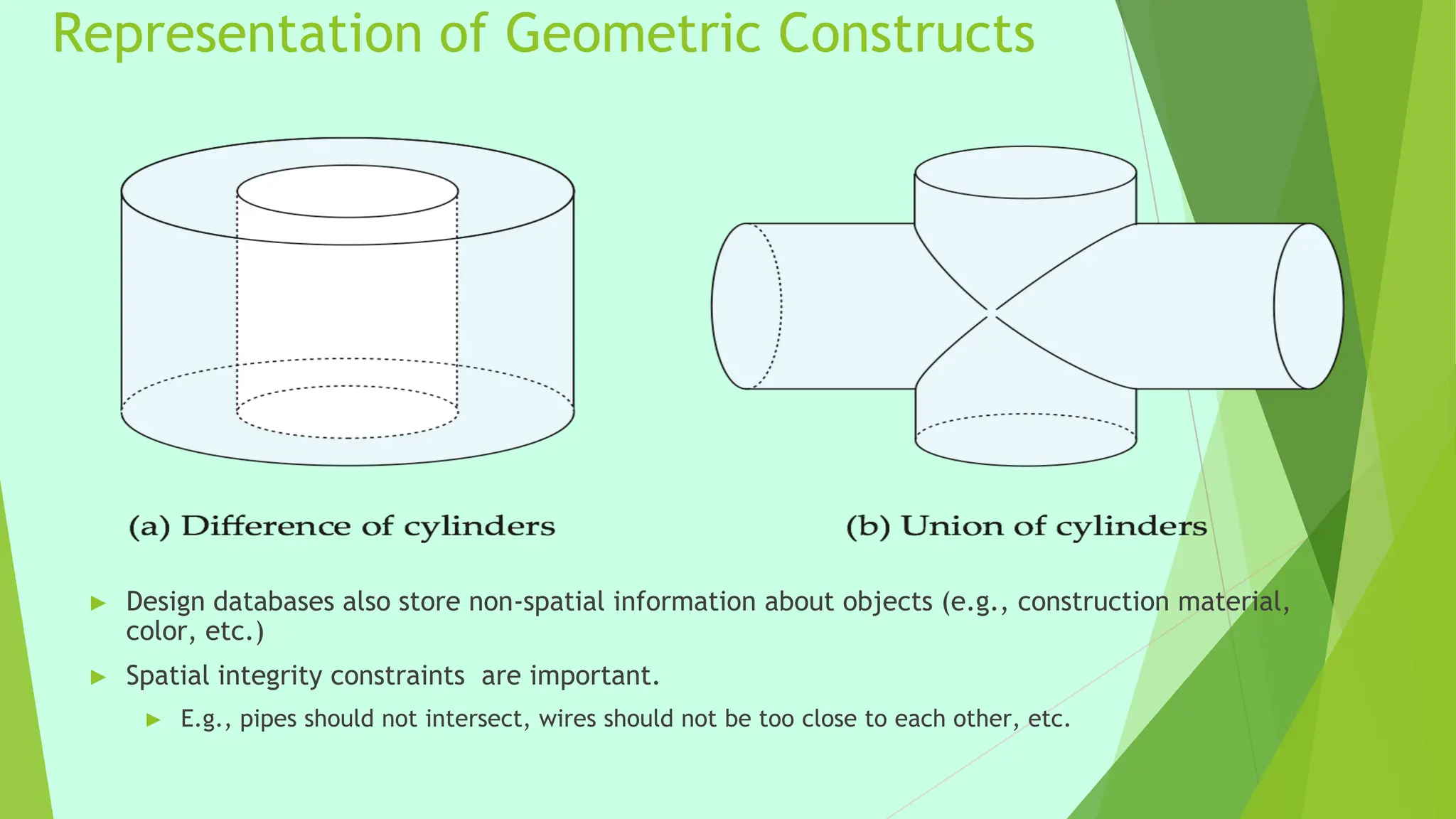
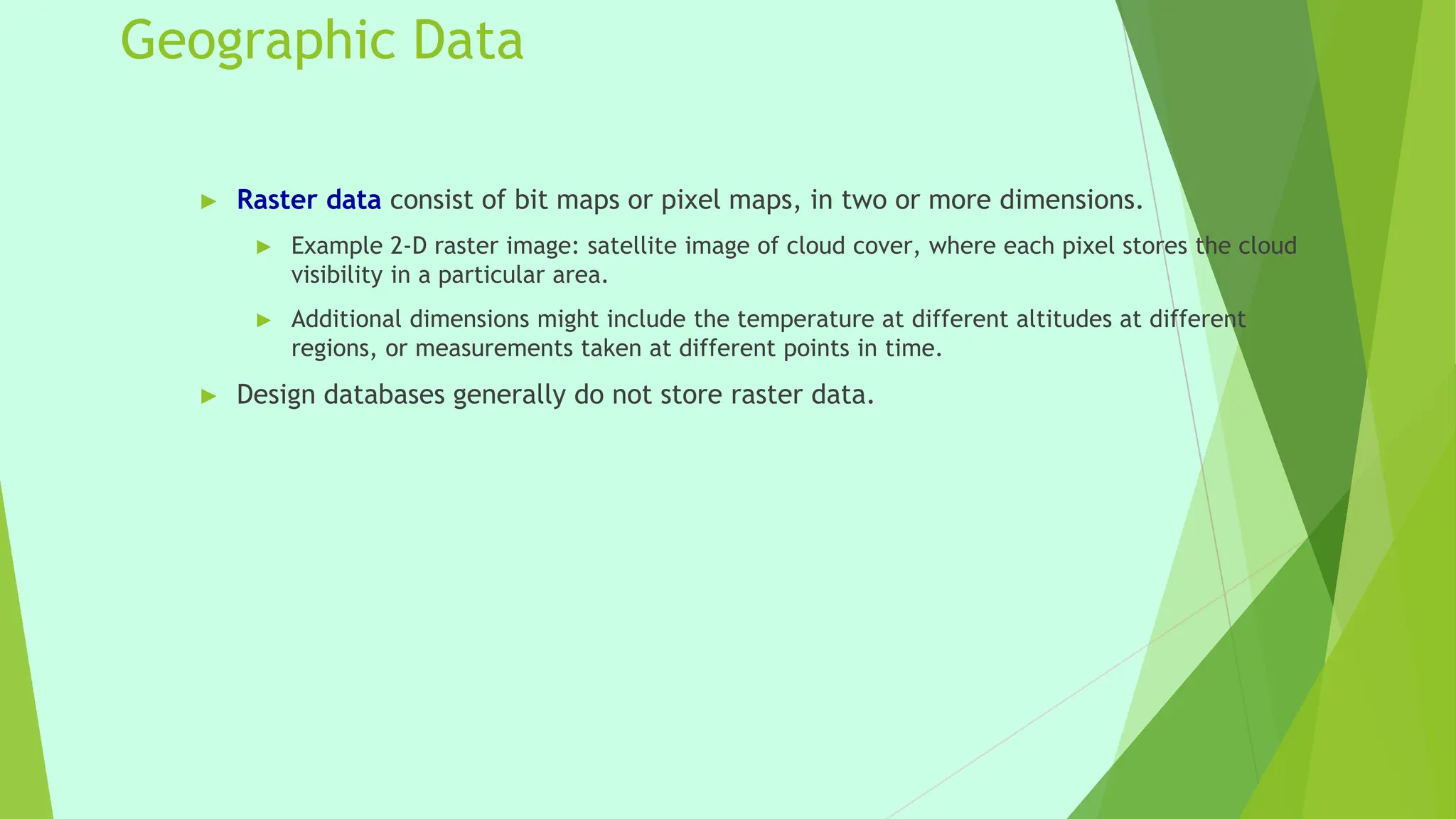
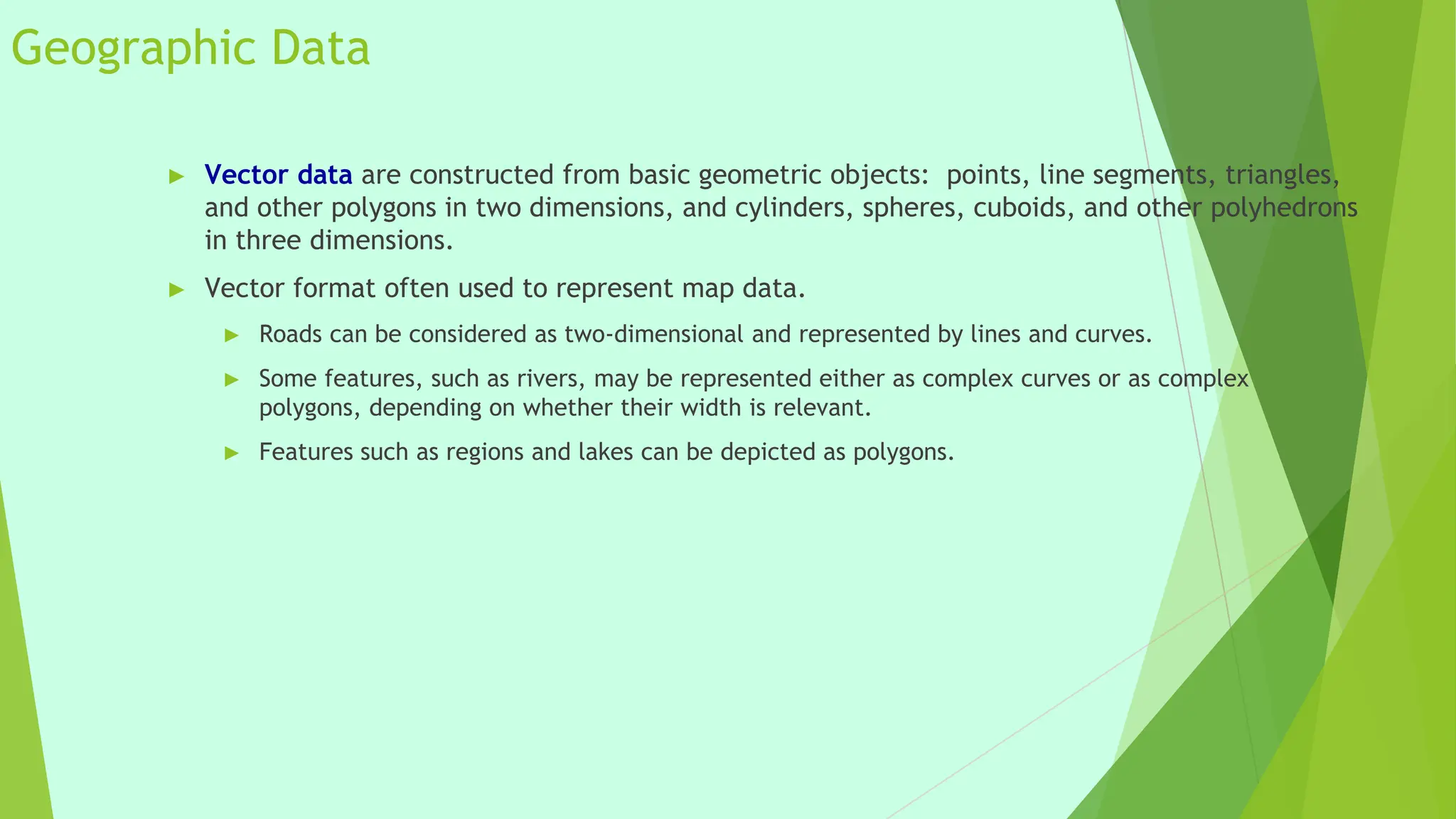

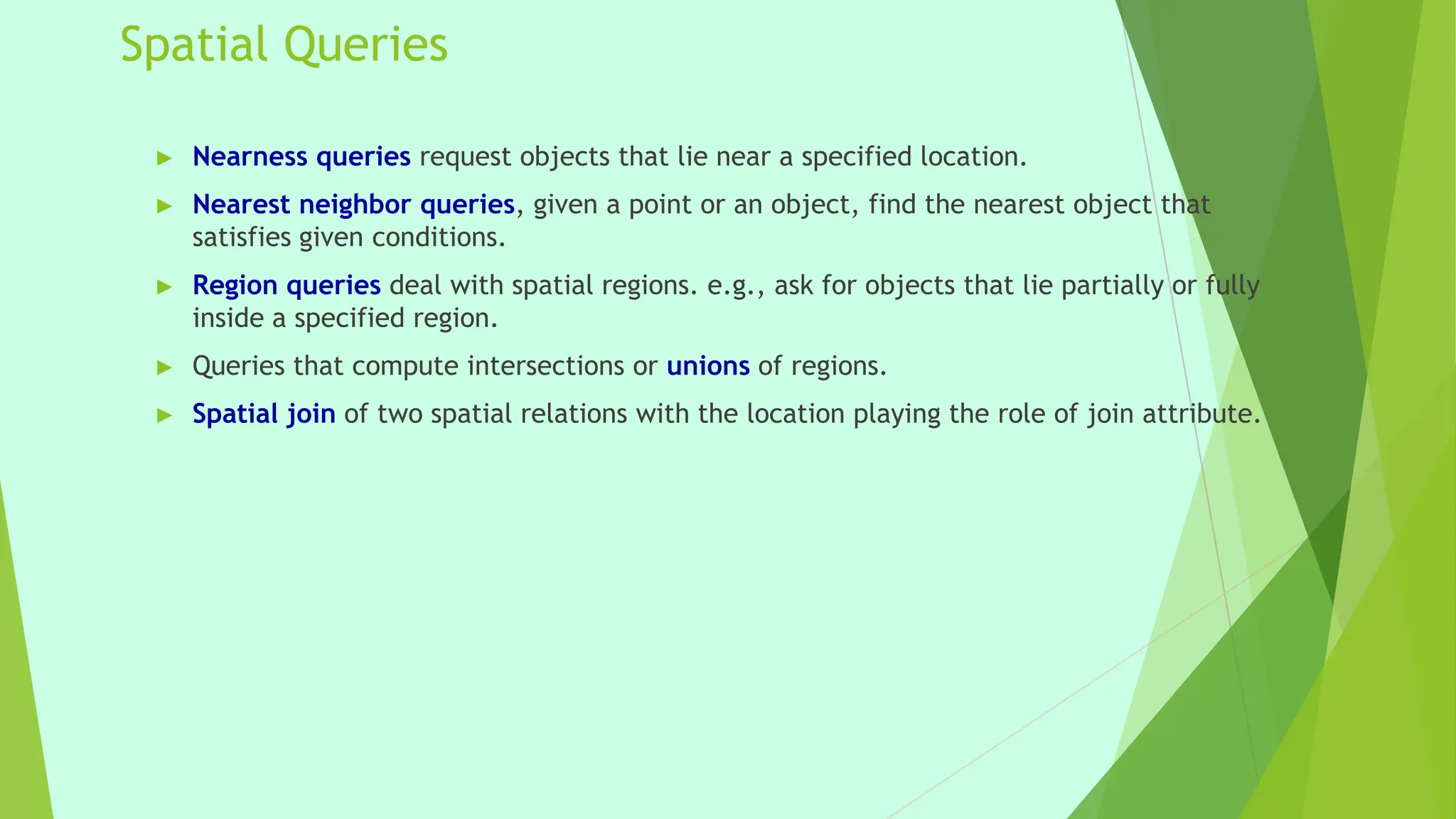
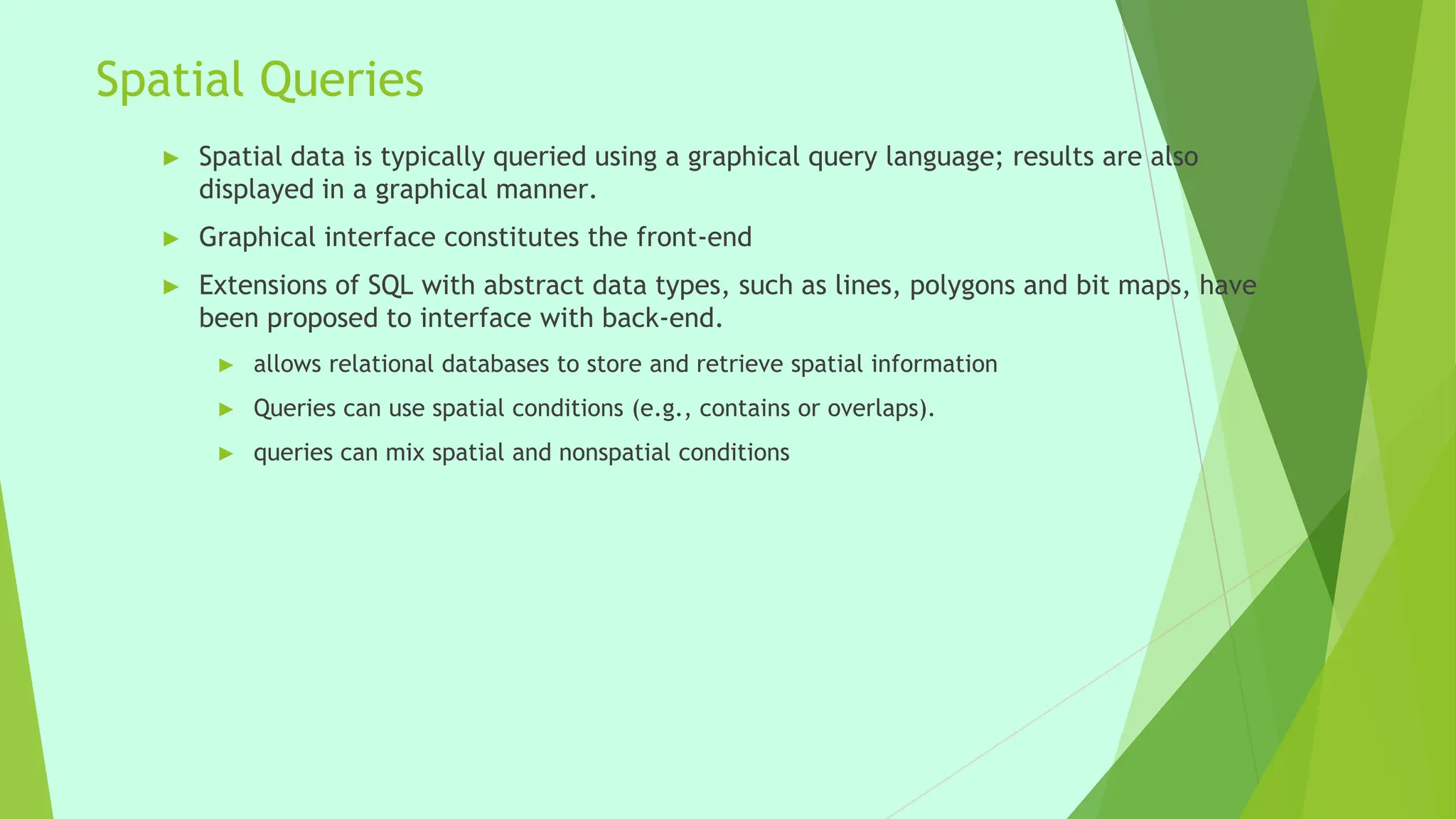

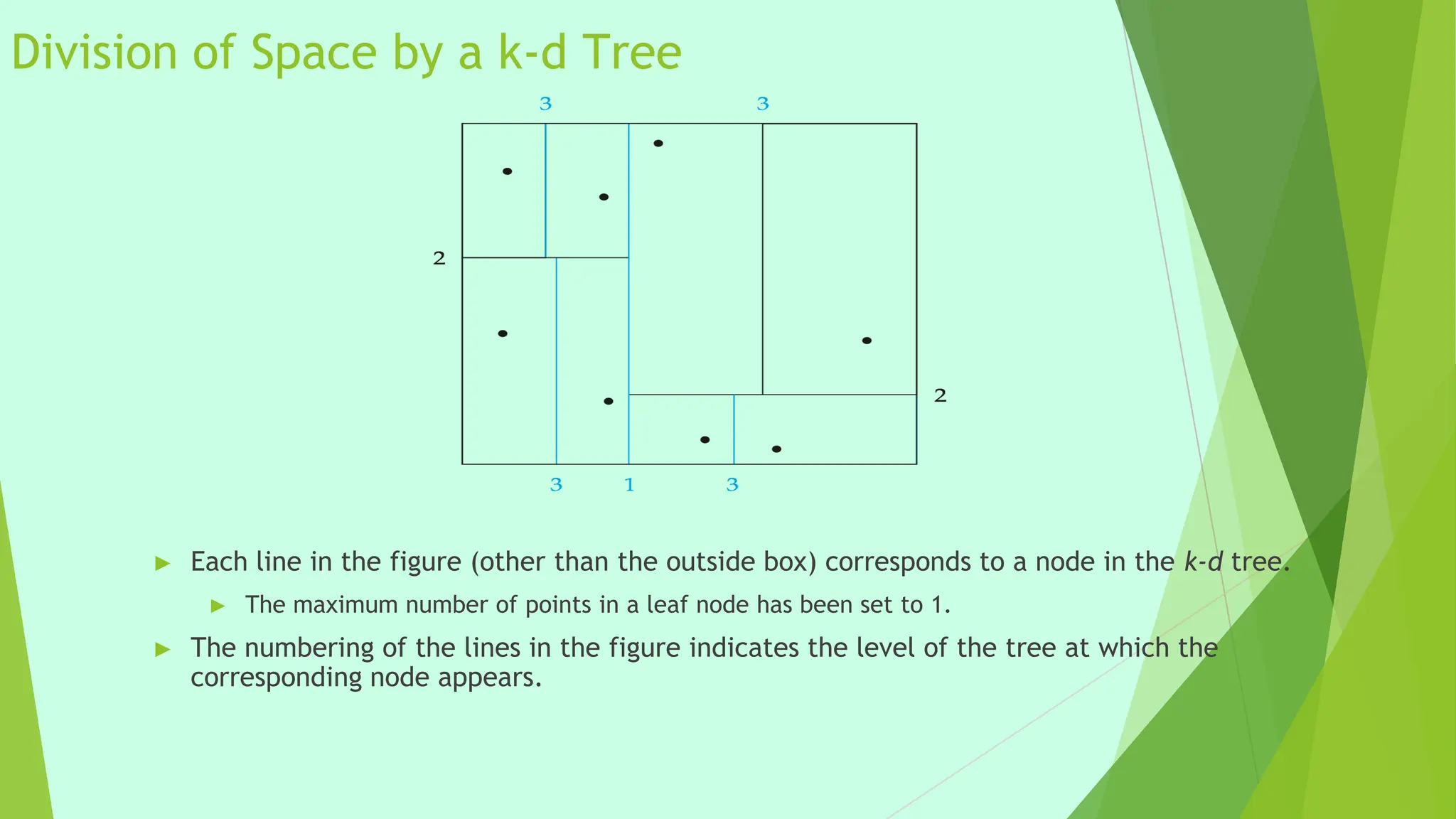
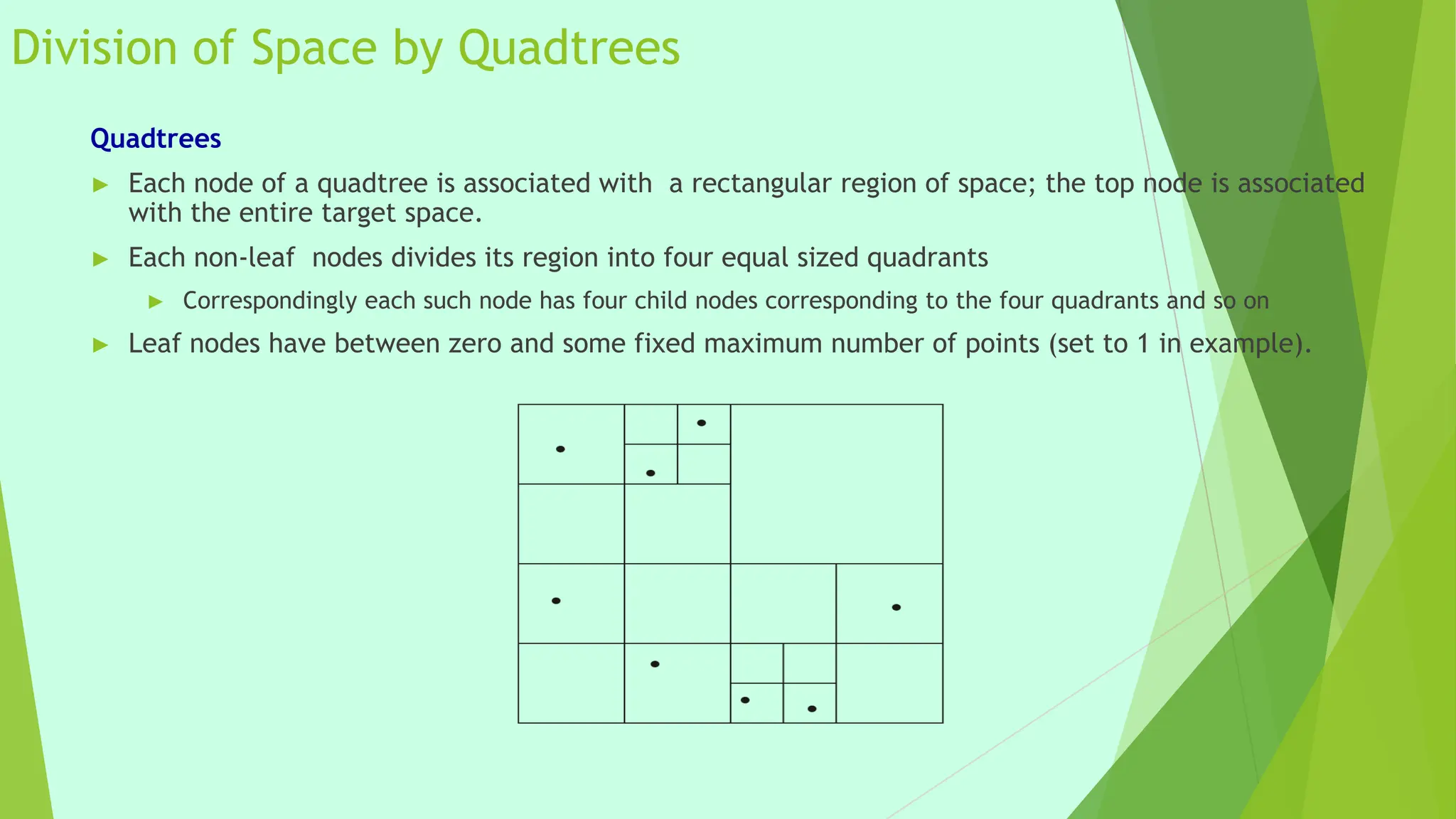

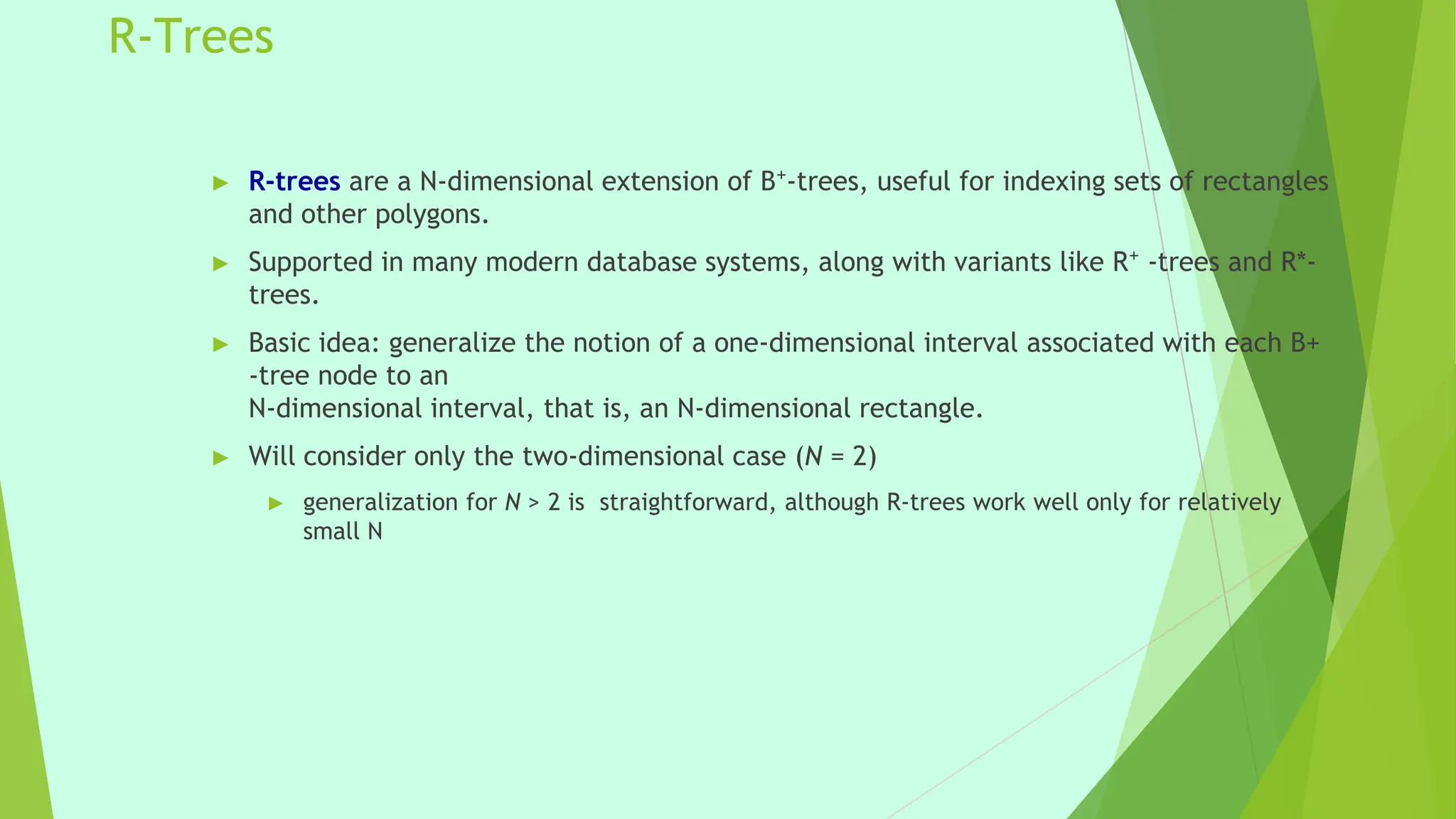
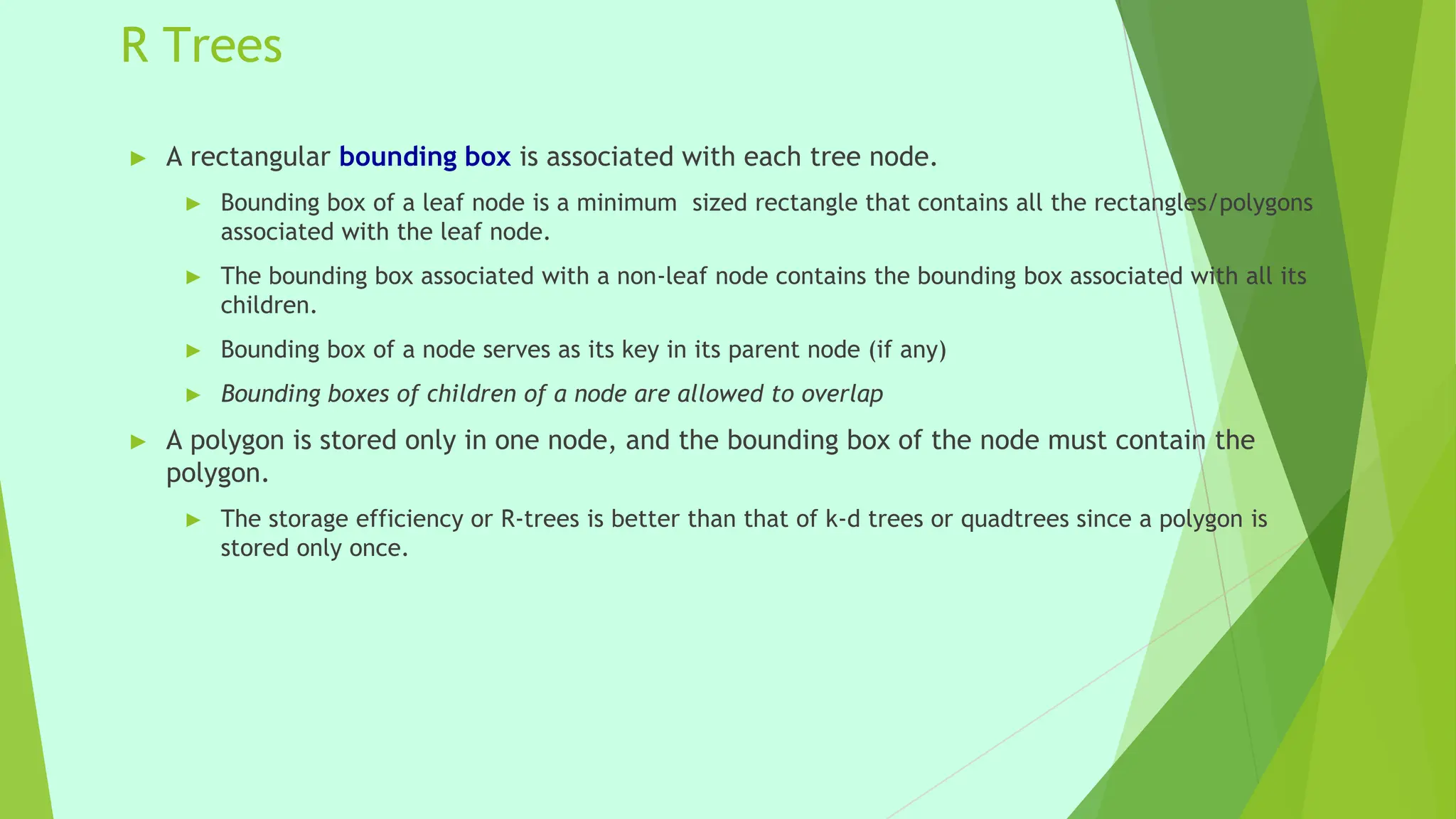
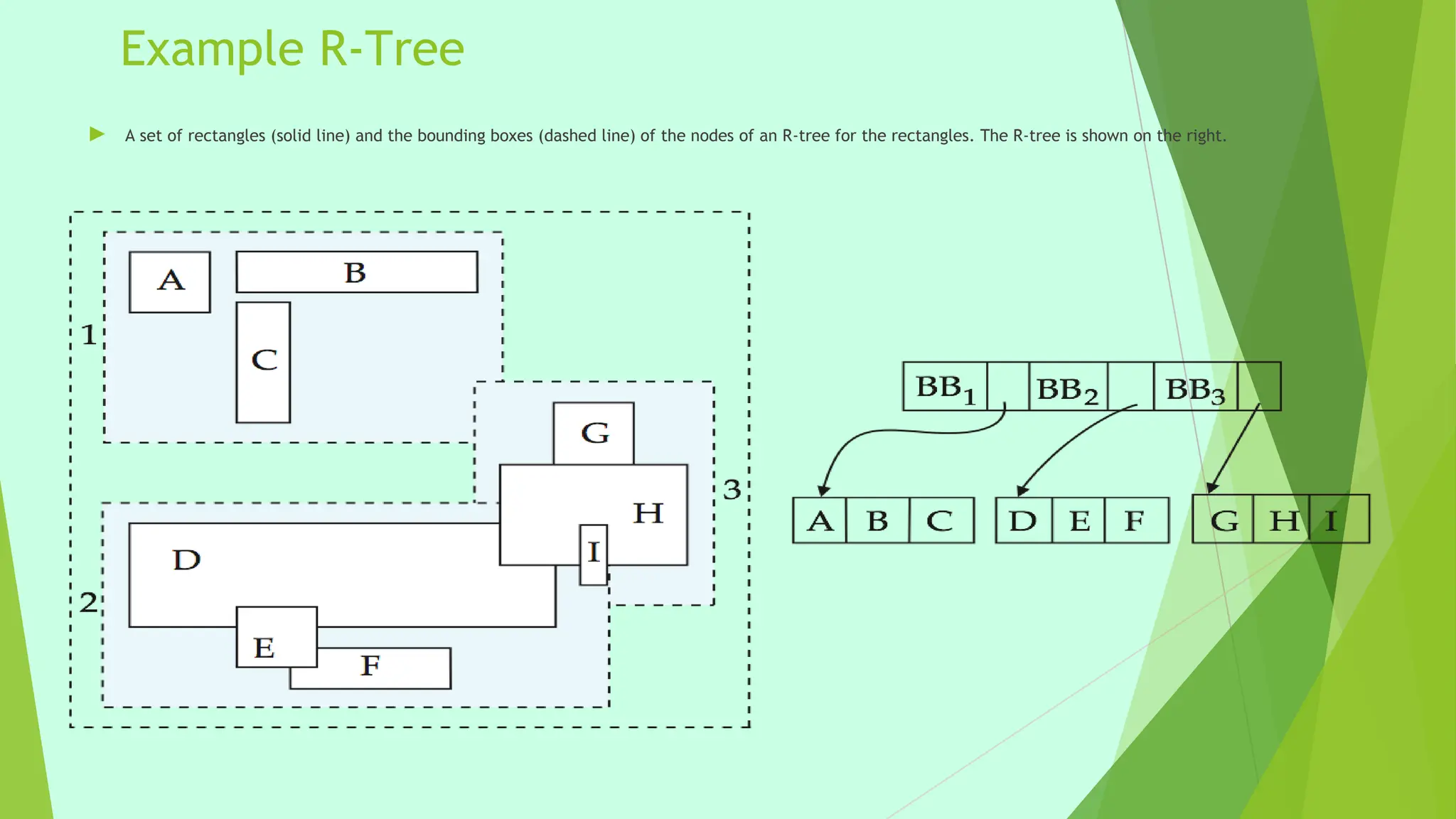
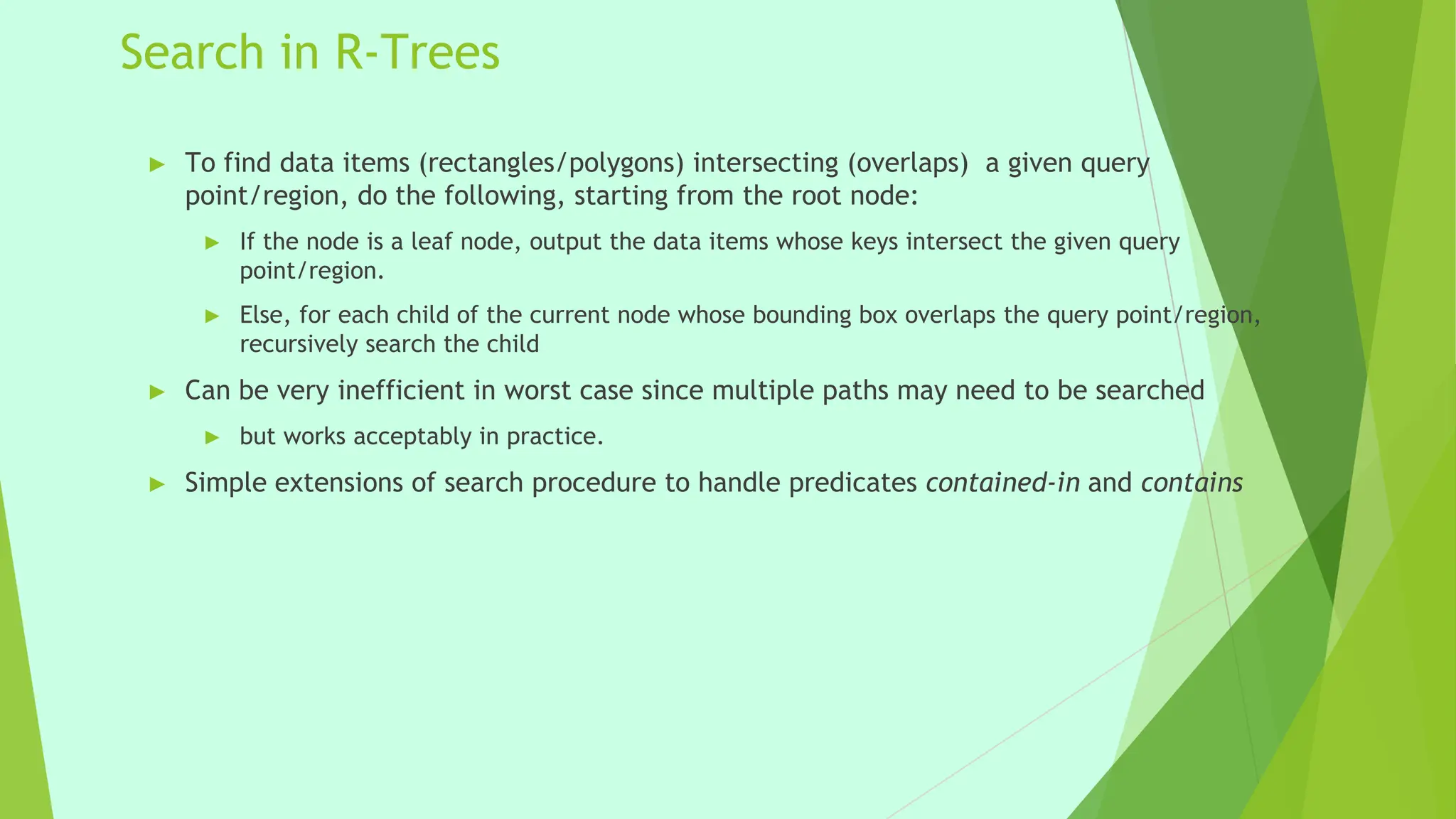
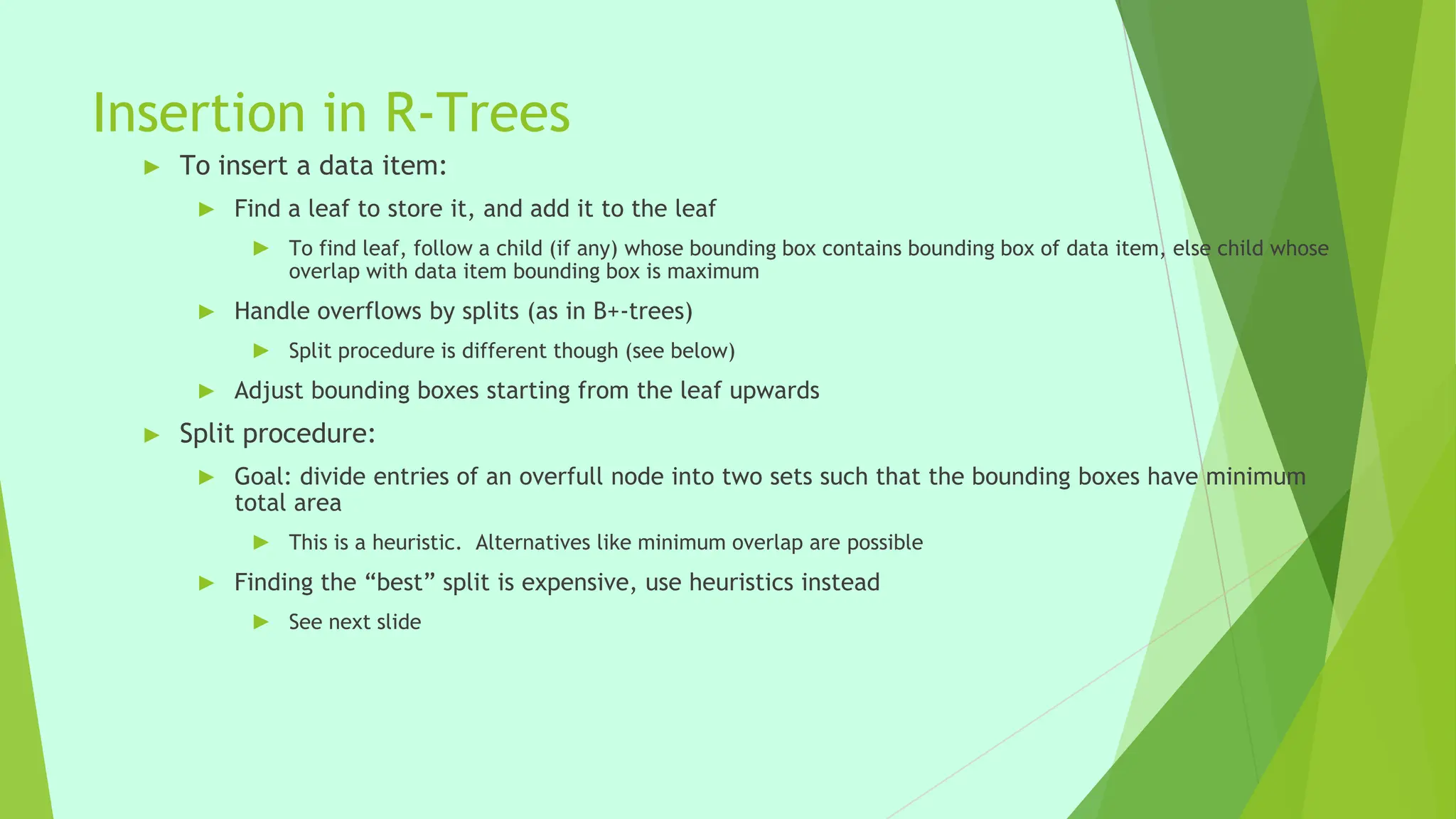
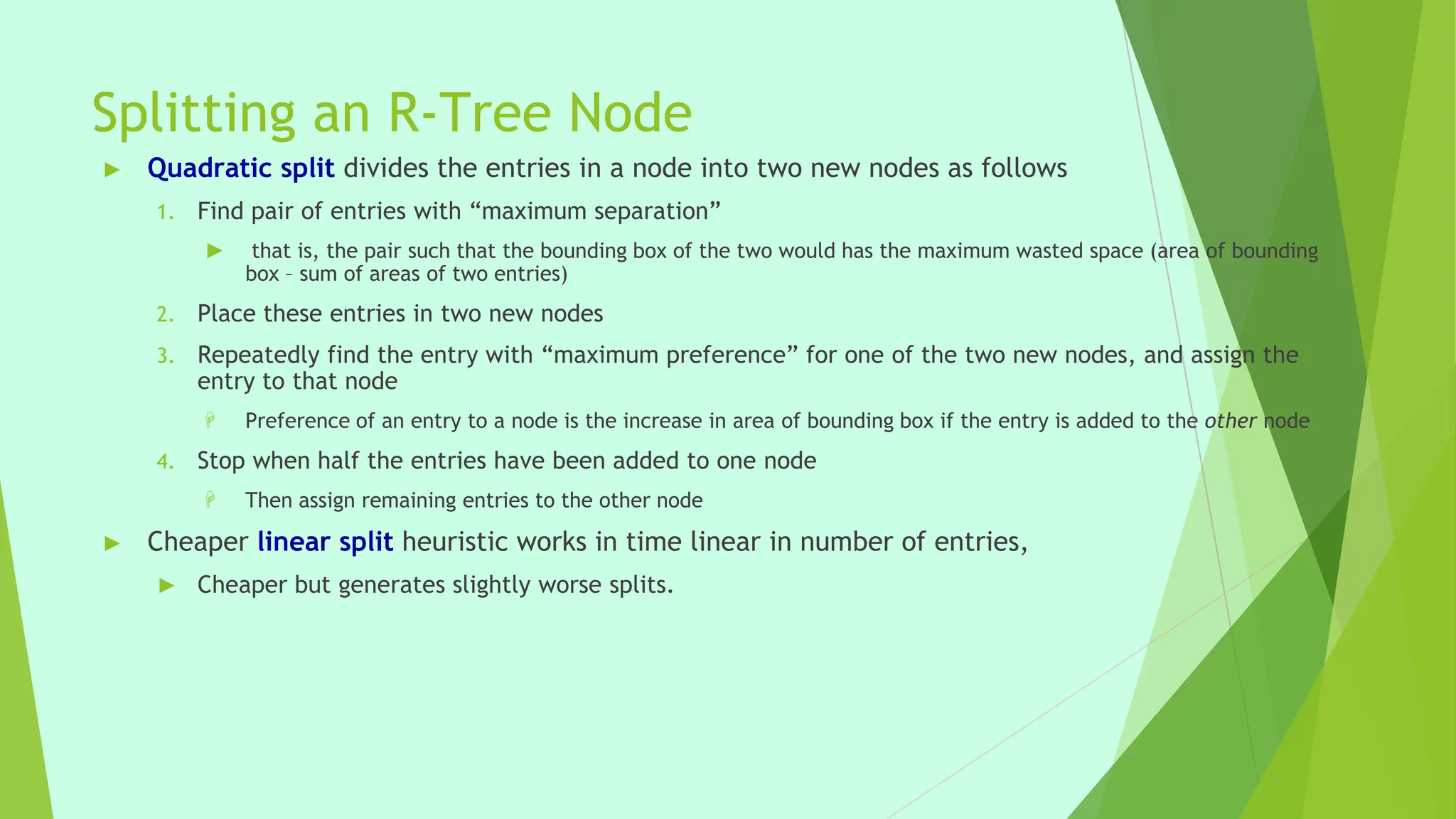
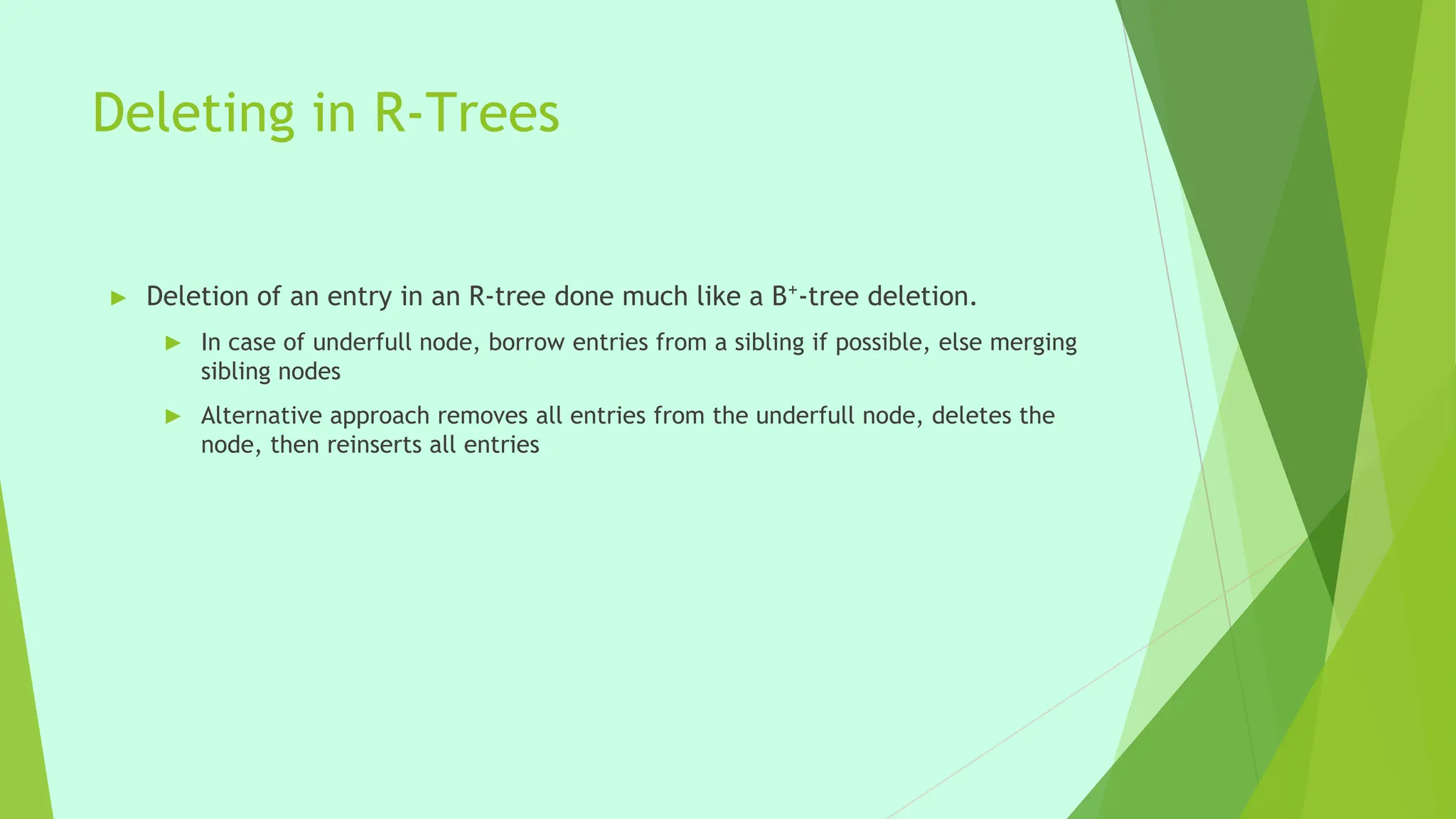
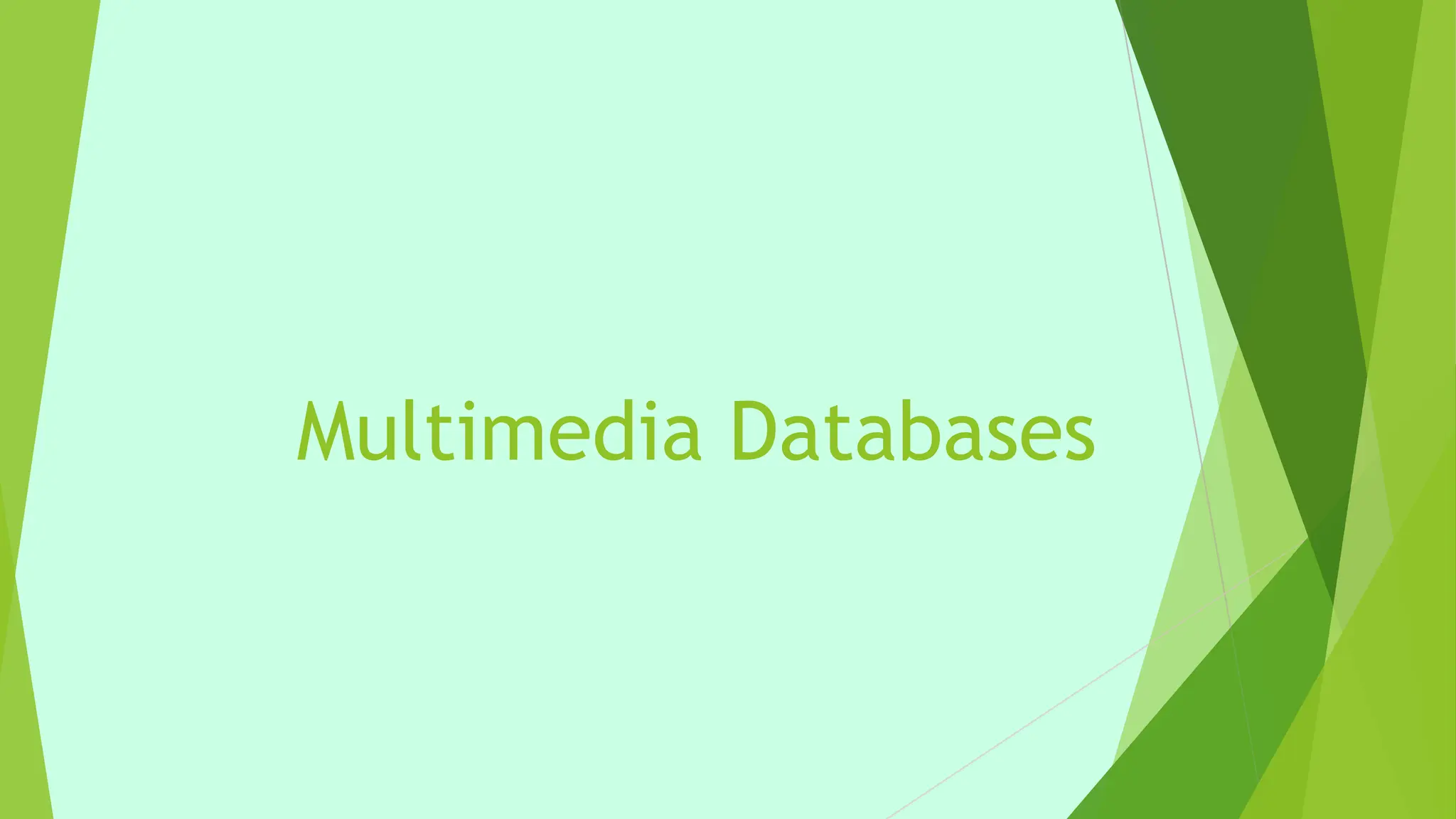
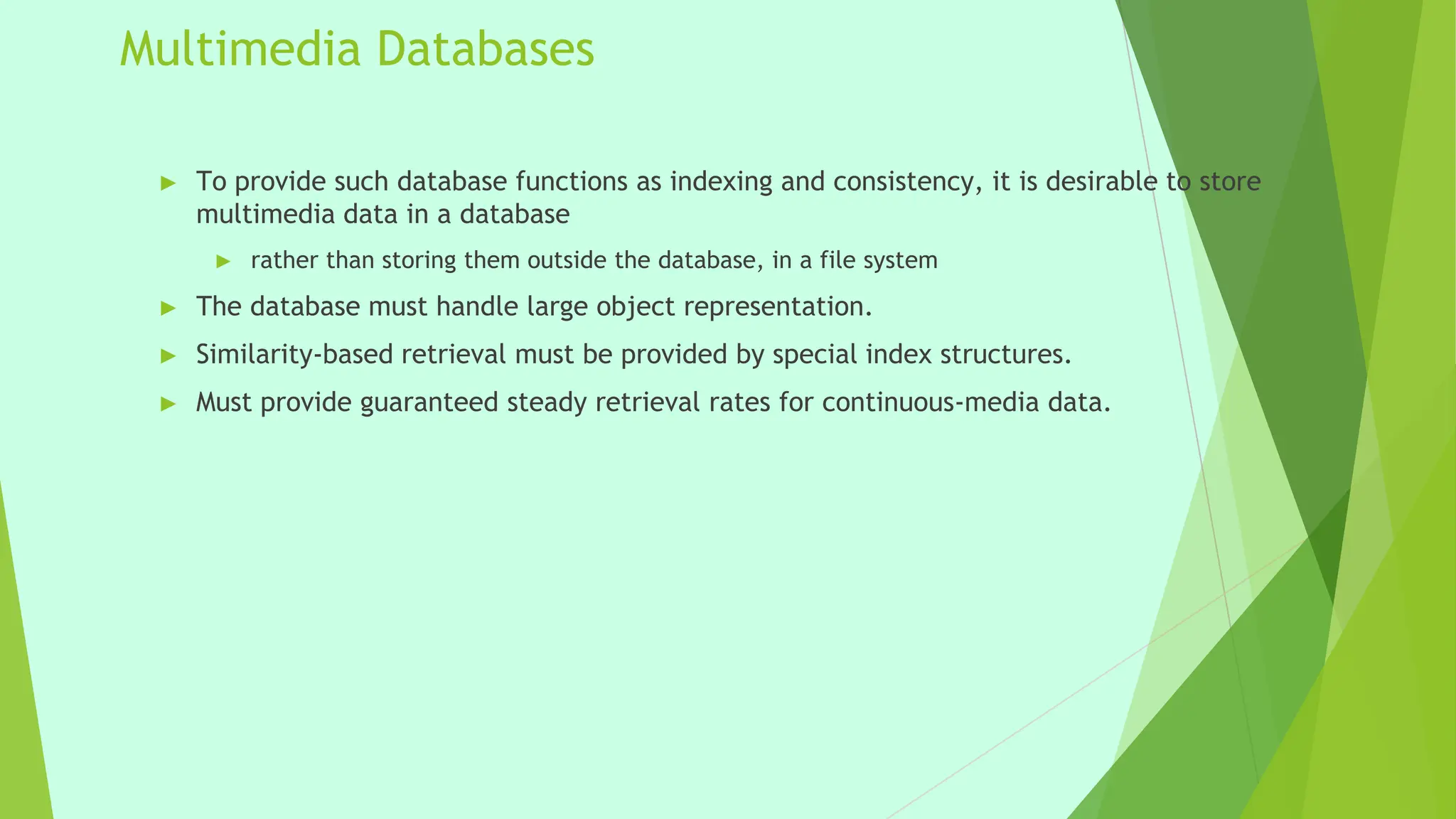
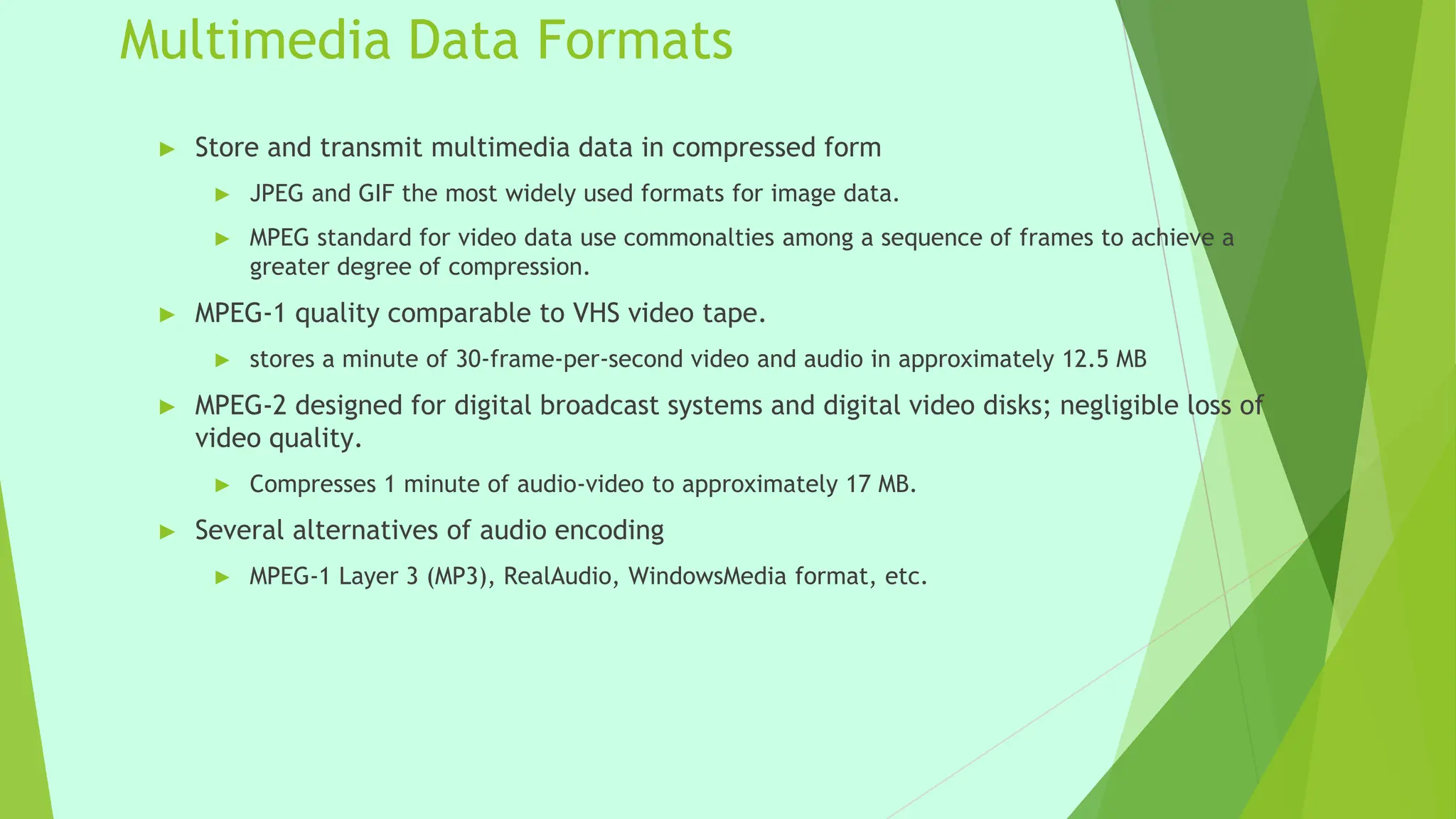
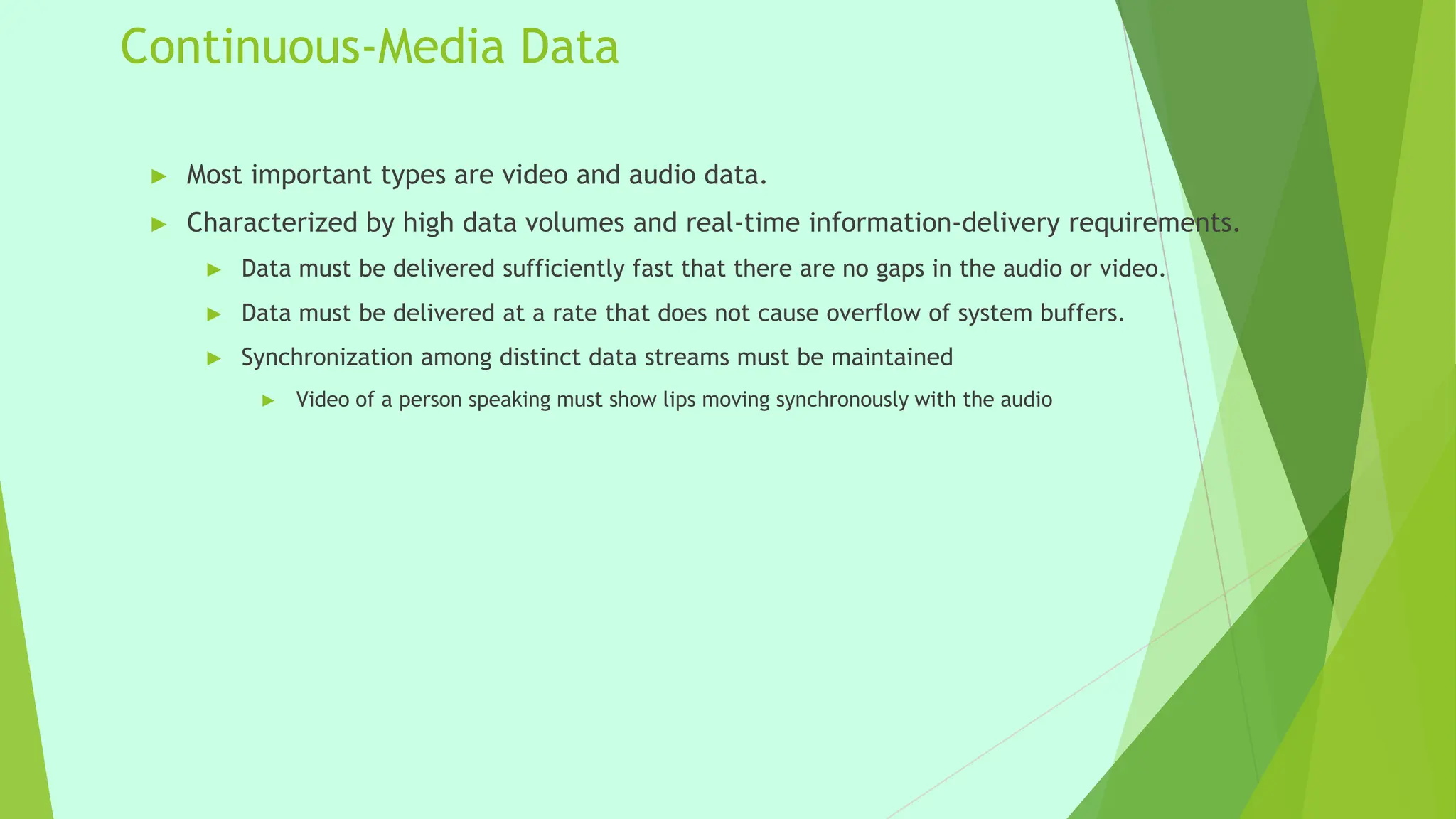
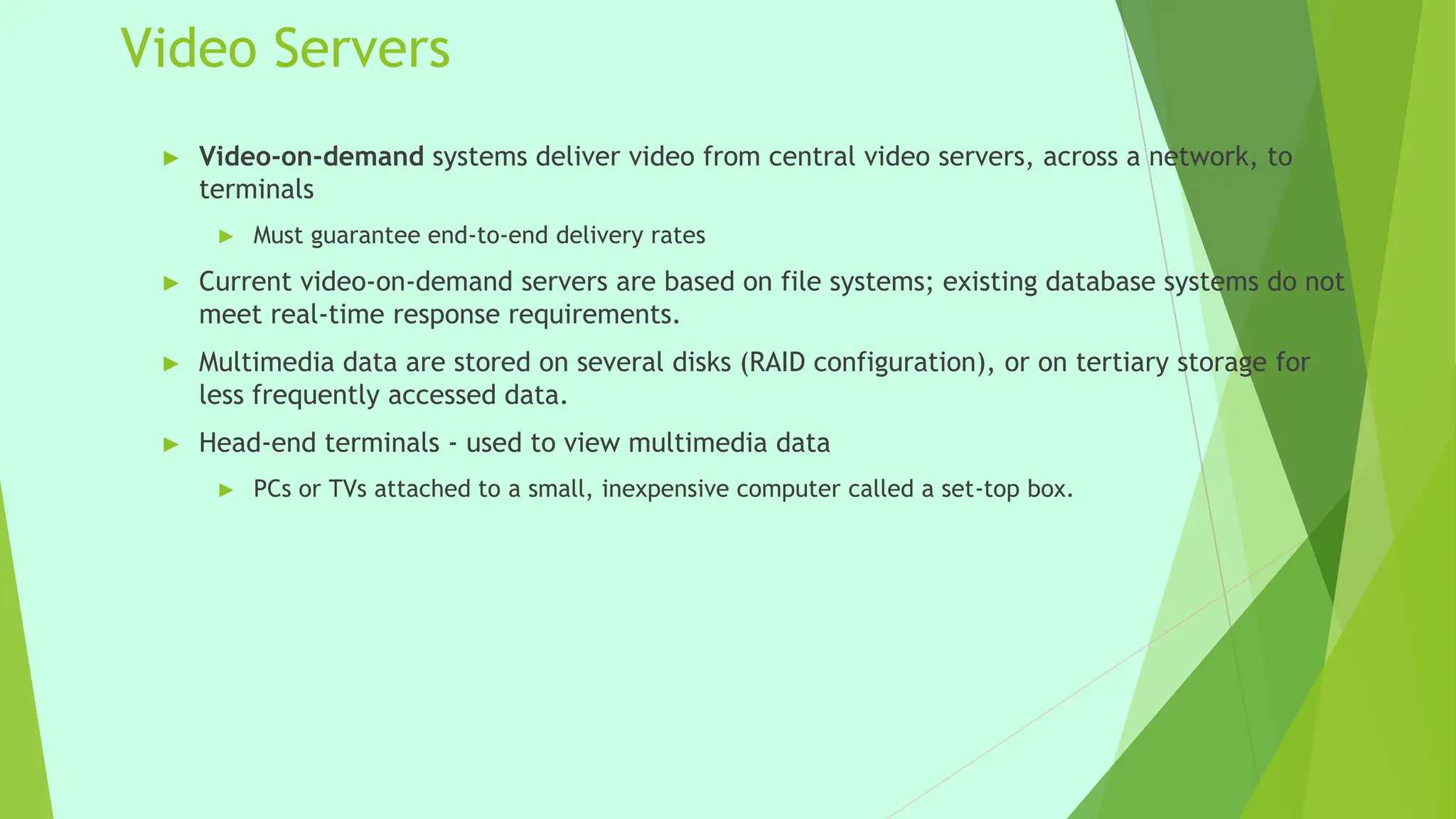


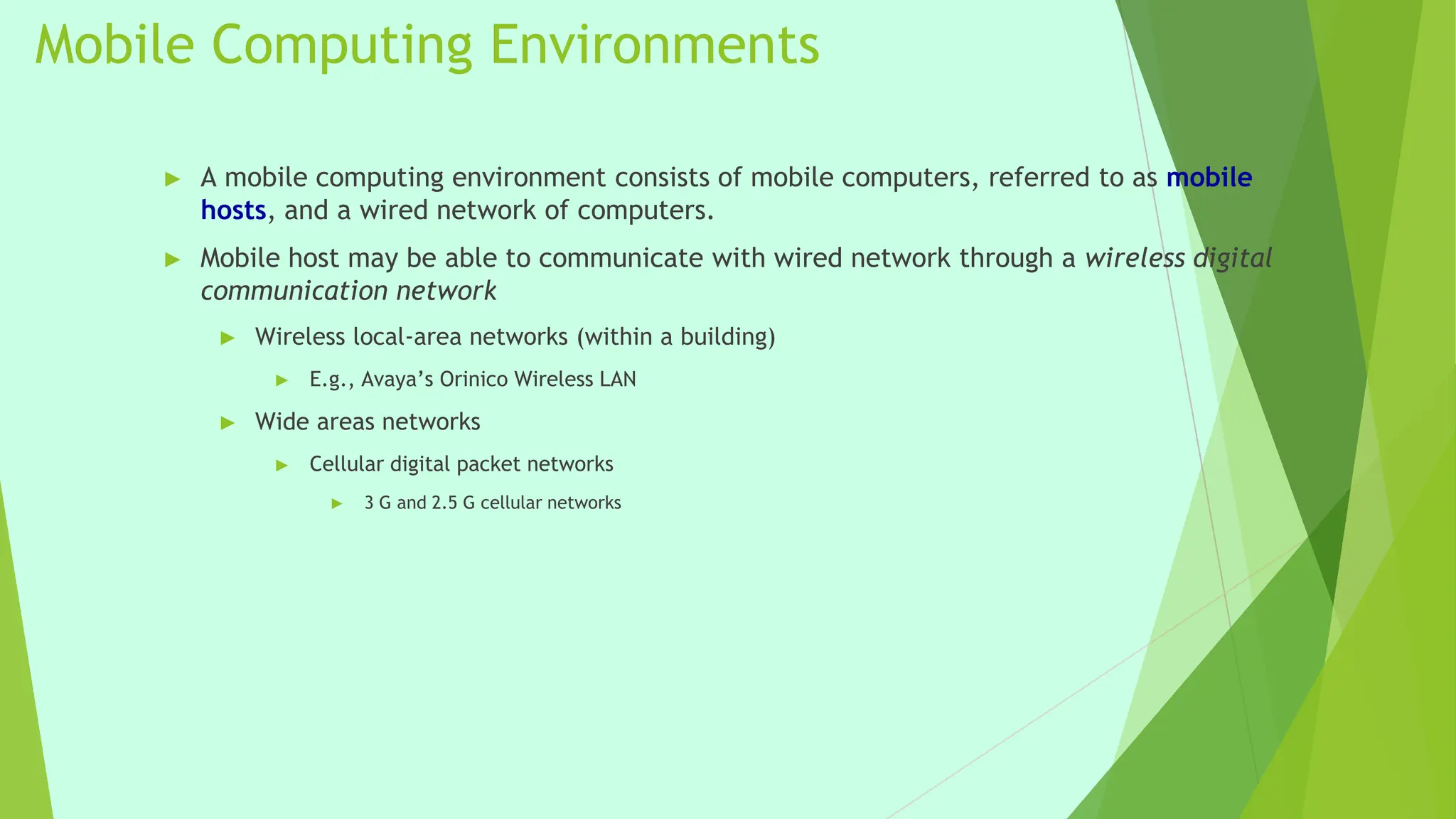
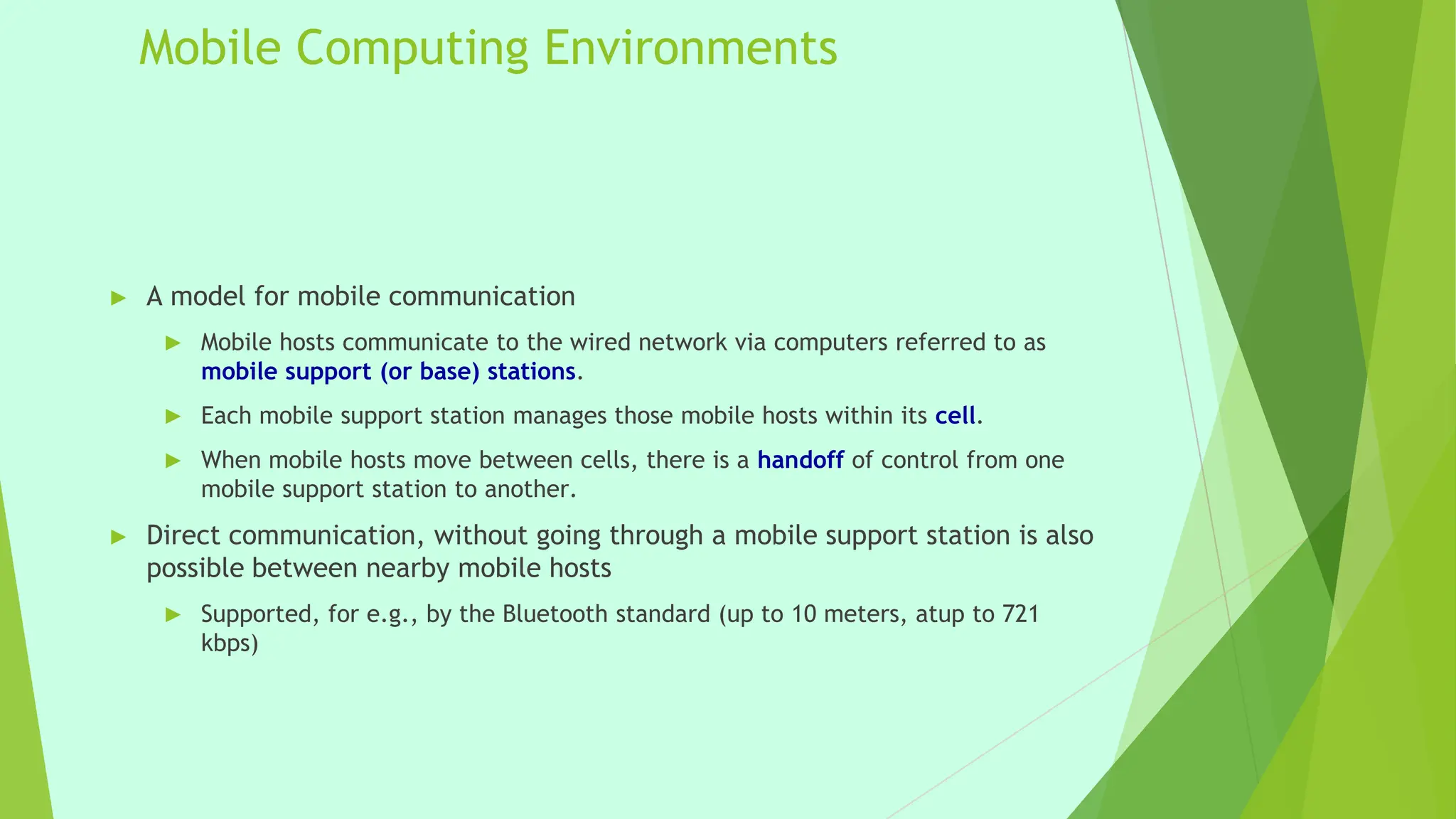
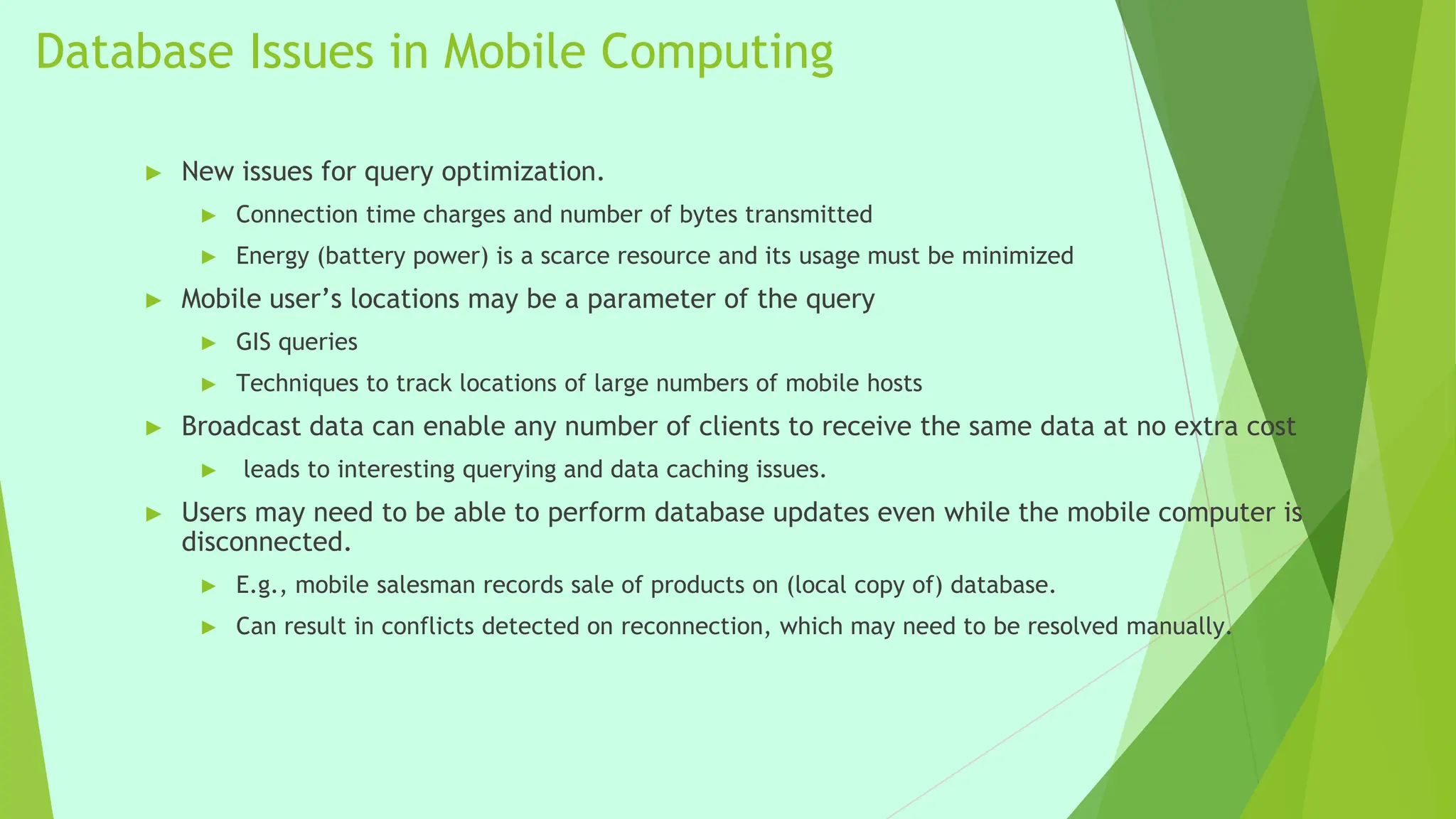
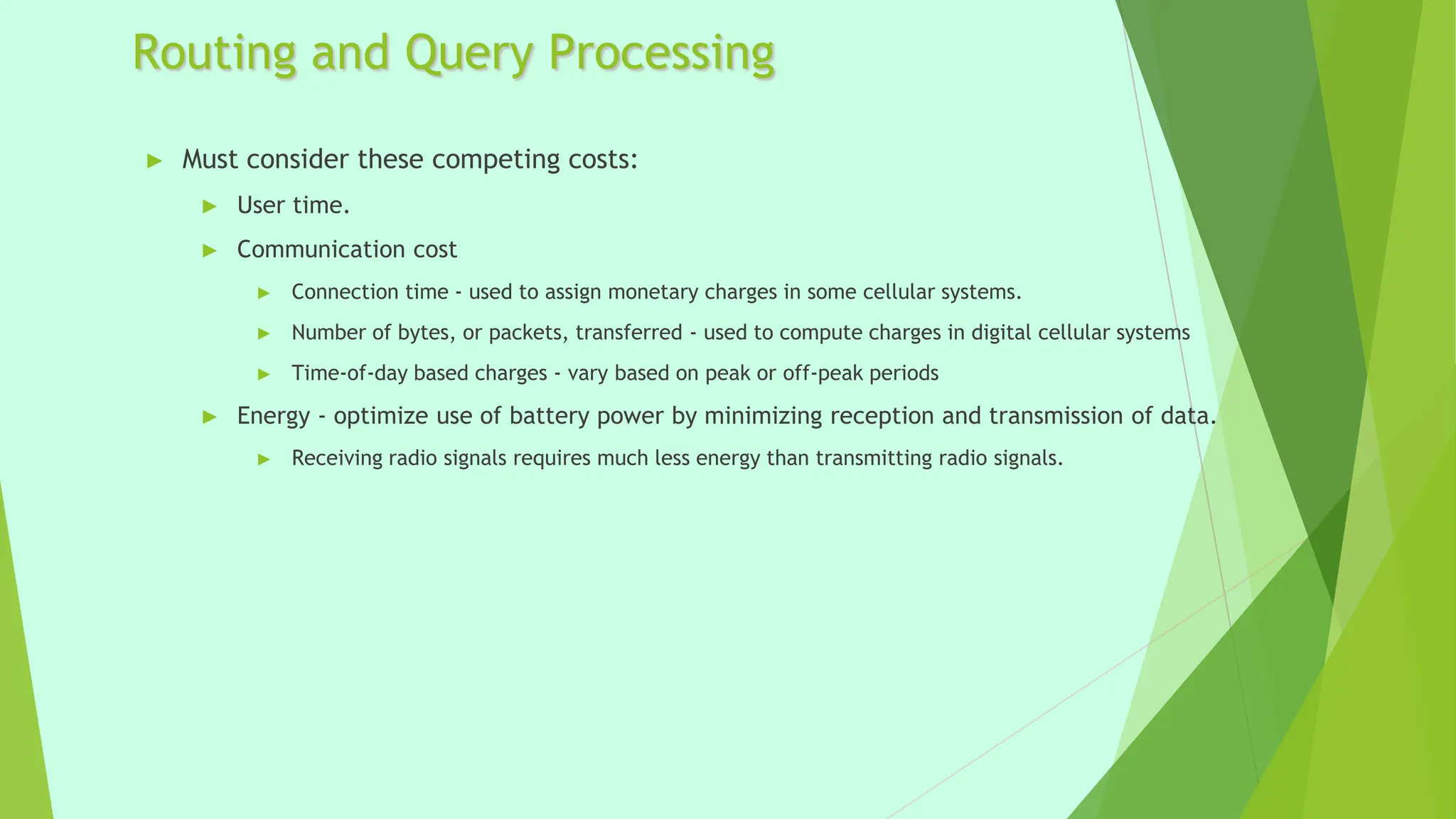
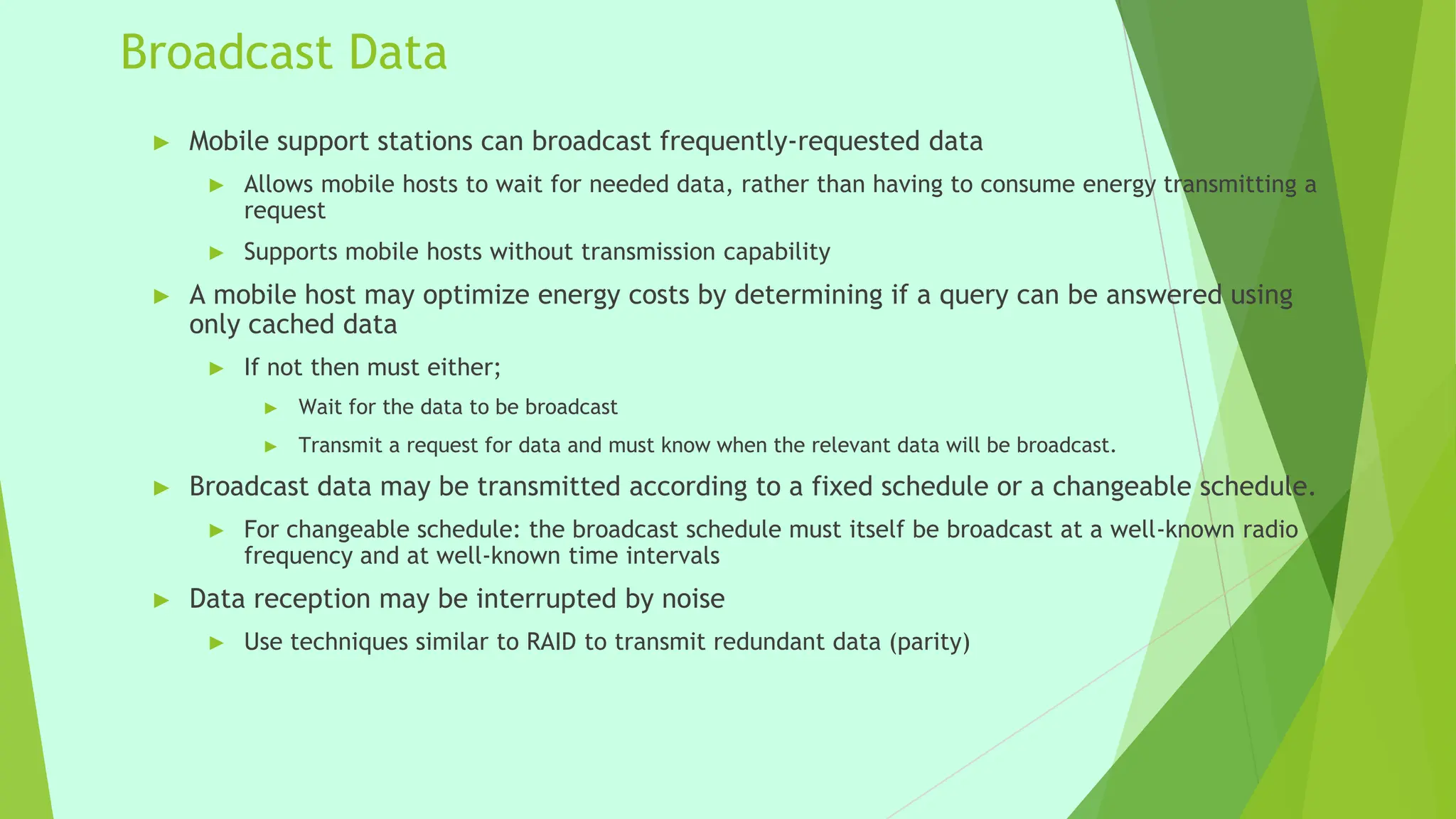
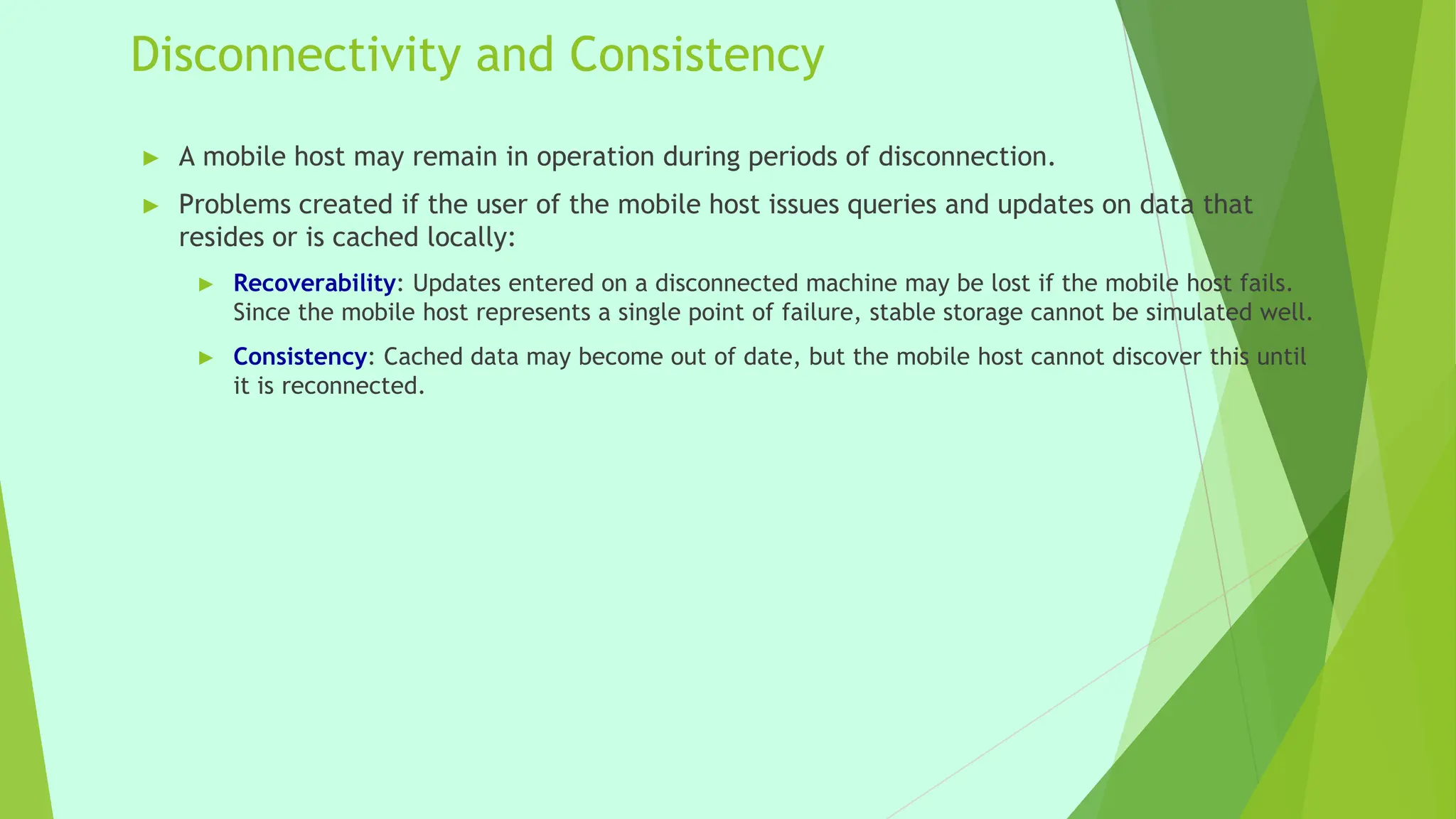
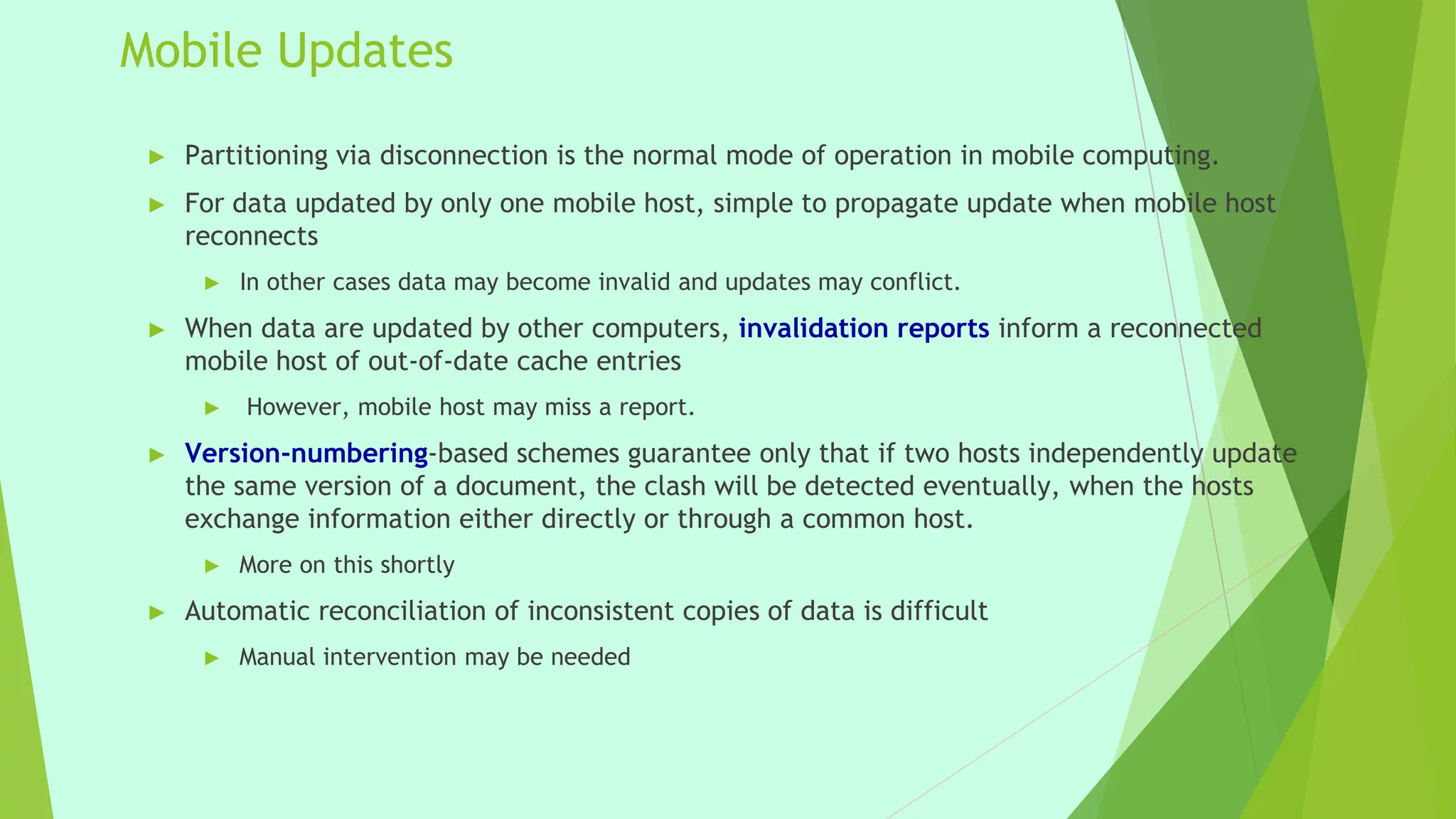
![Detecting Inconsistent Updates
► Version vector scheme used to detect inconsistent updates to documents at different hosts
(sites).
► Copies of document d at hosts i and j are inconsistent if
1. the copy of document d at i contains updates performed by host k that have not been propagated to
host j (k may be the same as i), and
2. the copy of d at j contains updates performed by host l that have not been propagated to host i (l
may be the same as j)
► Basic idea: each host i stores, with its copy of each document d, a version vector - a set of
version numbers, with an element Vd,i [k] for every other host k
► When a host i updates a document d, it increments the version number Vd,i [i] by 1](https://image.slidesharecdn.com/unit-vi-240216053828-17f31fe1/75/Database-management-unit-6-of-computer-engineering-59-2048.jpg)
![Detecting Inconsistent Updates
► When two hosts i and j connect to each other they check if the copies of all documents d that
they share are consistent:
1. If the version vectors are the same on both hosts (that is, for each k, Vd,i [k] = Vd,j [k]) then the
copies of d are identical.
2. If, for each k, Vd,i [k] Vd,j [k], and the version vectors are not identical, then the copy of document
d at host i is older than the one at host j
► That is, the copy of document d at host j was obtained by one or more modifications of the copy of d at host
i.
► Host i replaces its copy of d, as well as its copy of the version vector for d, with the copies from host j.
3. If there is a pair of hosts k and m such that Vd,i [k]< Vd,j [k], and
Vd,i [m] > Vd,j [m], then the copies are inconsistent
► That is, two or more updates have been performed
on d independently.](https://image.slidesharecdn.com/unit-vi-240216053828-17f31fe1/75/Database-management-unit-6-of-computer-engineering-60-2048.jpg)
